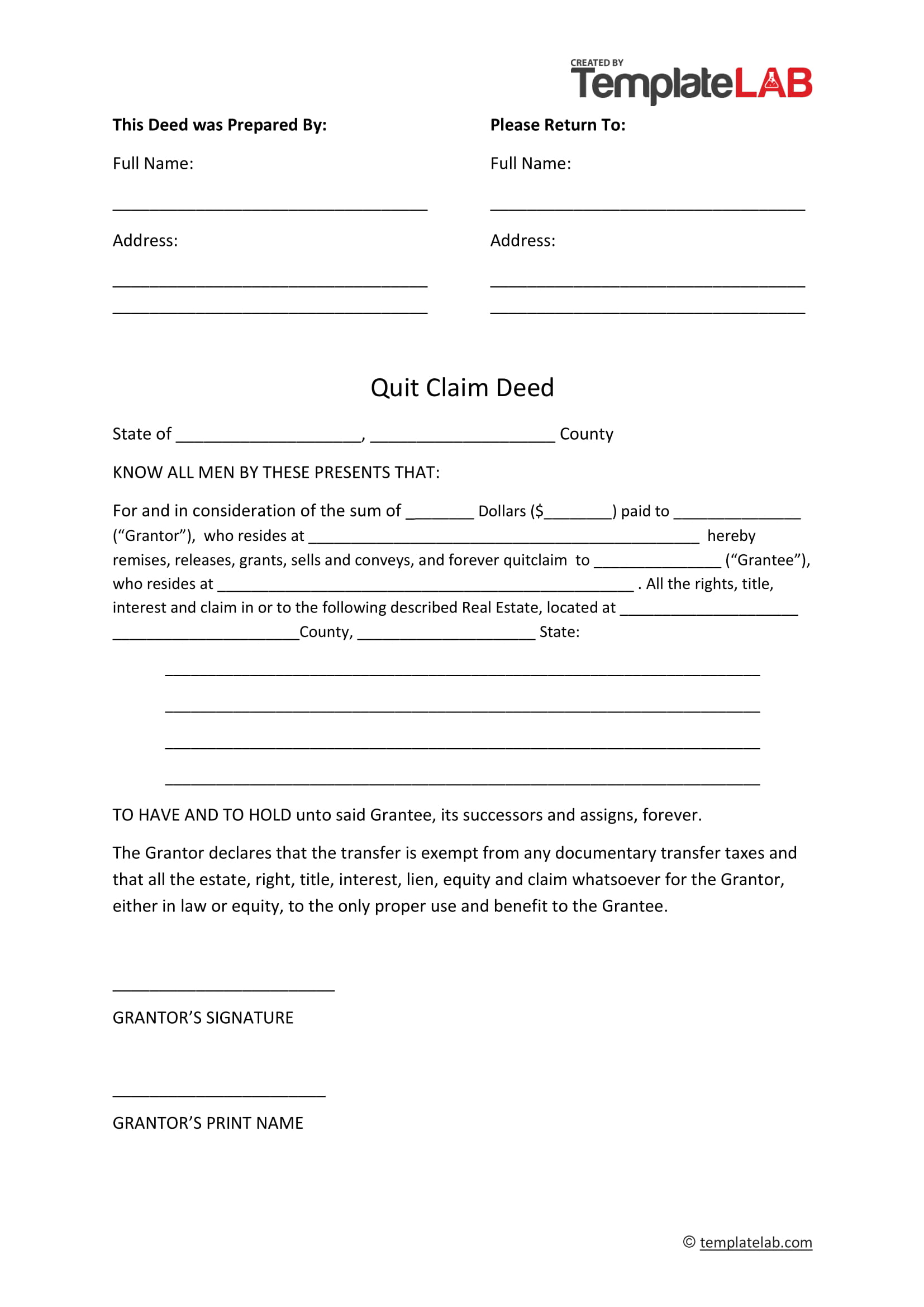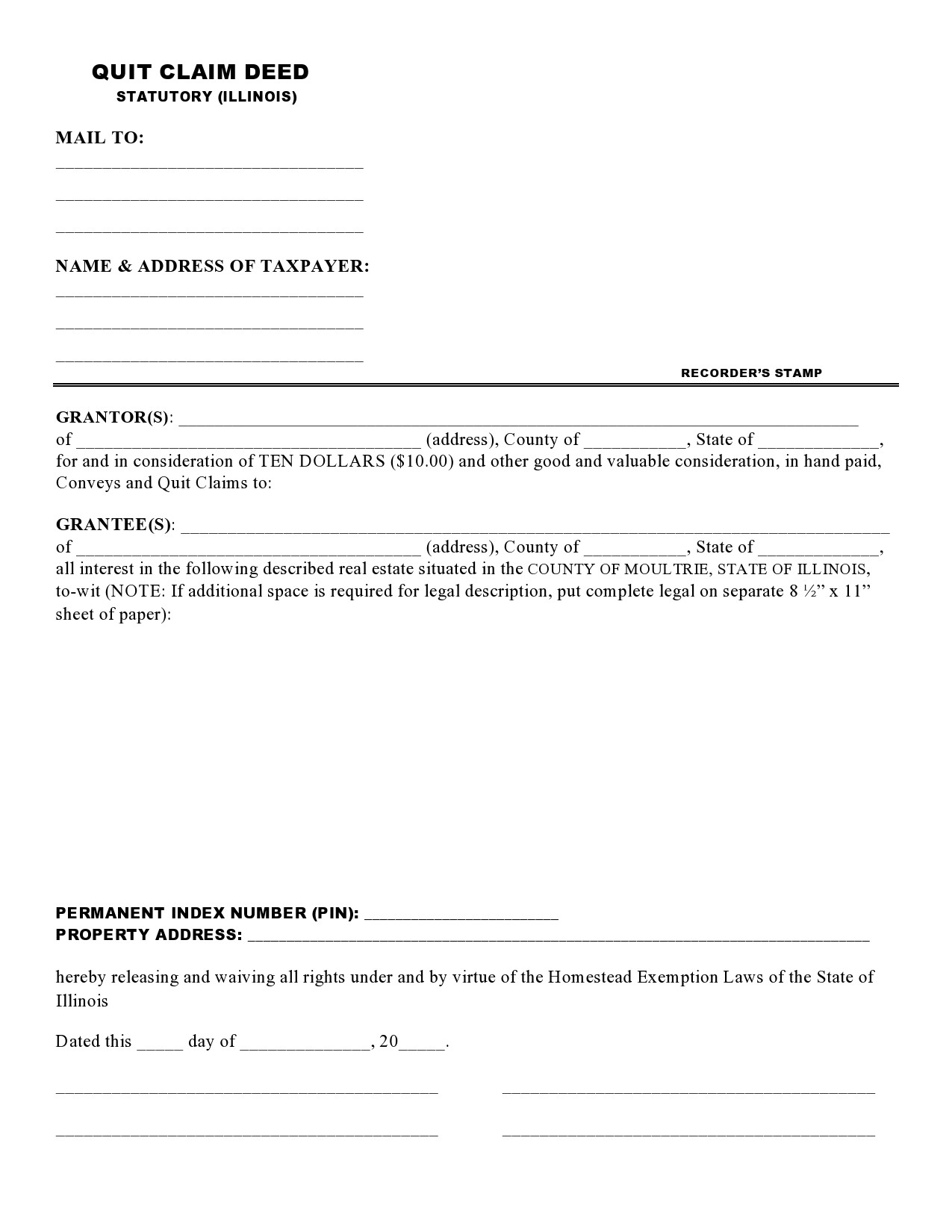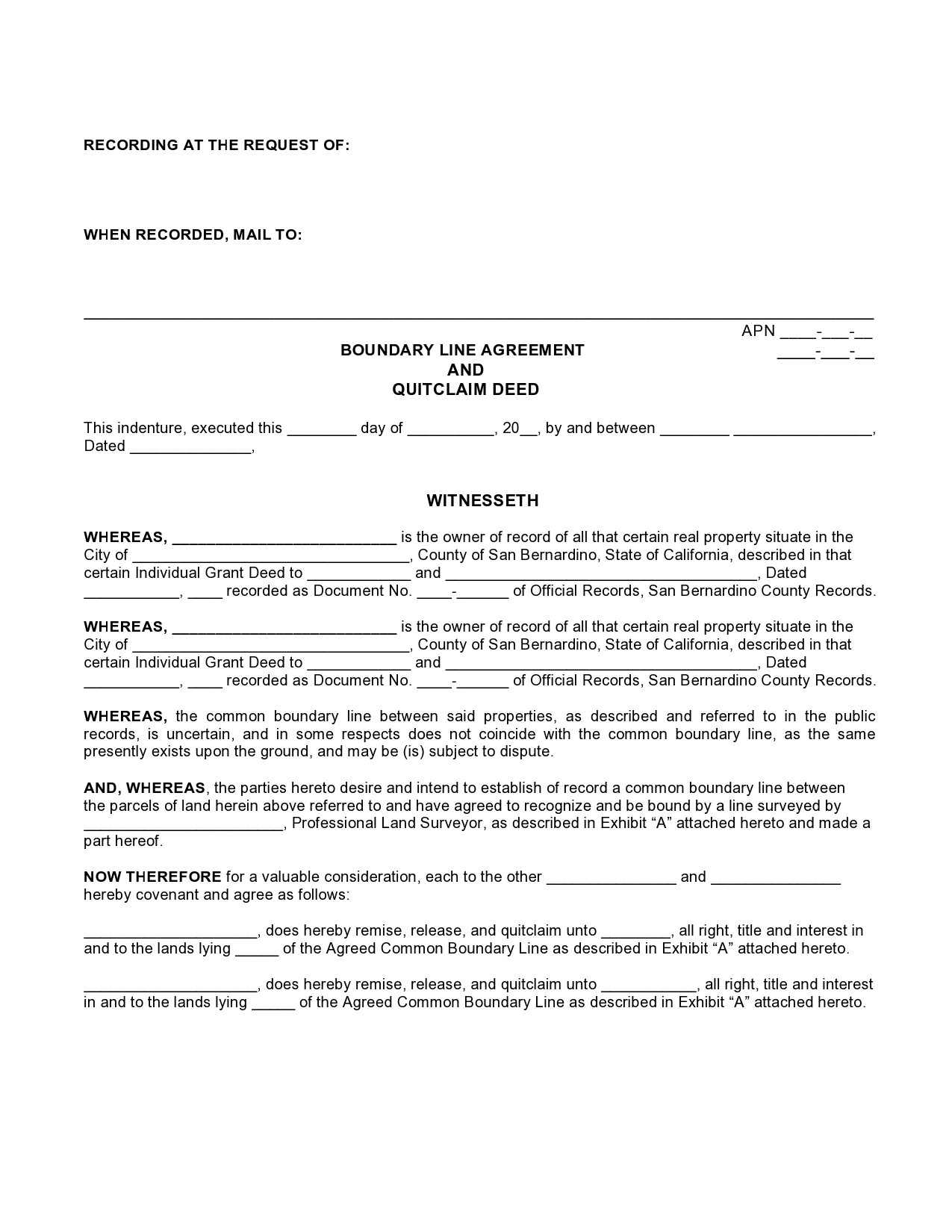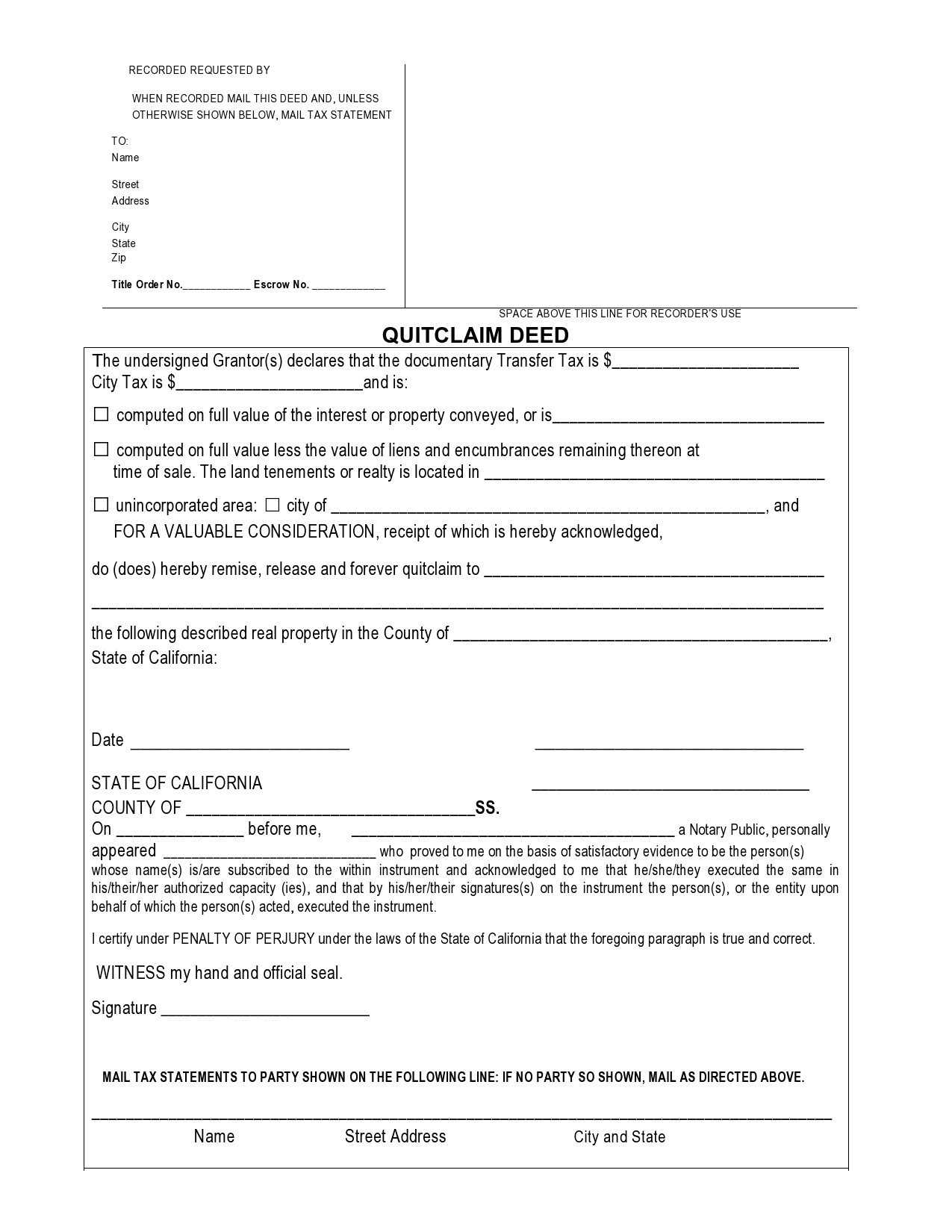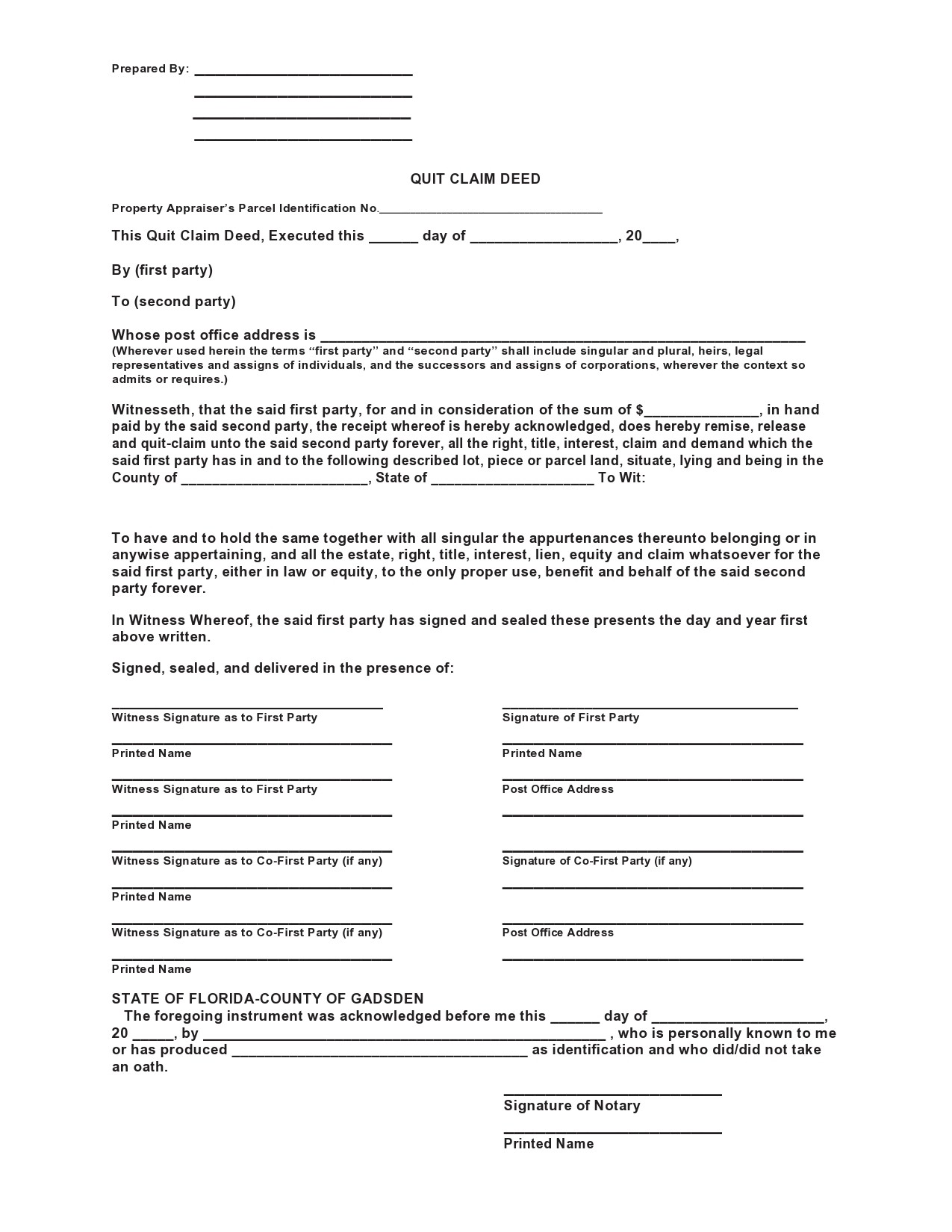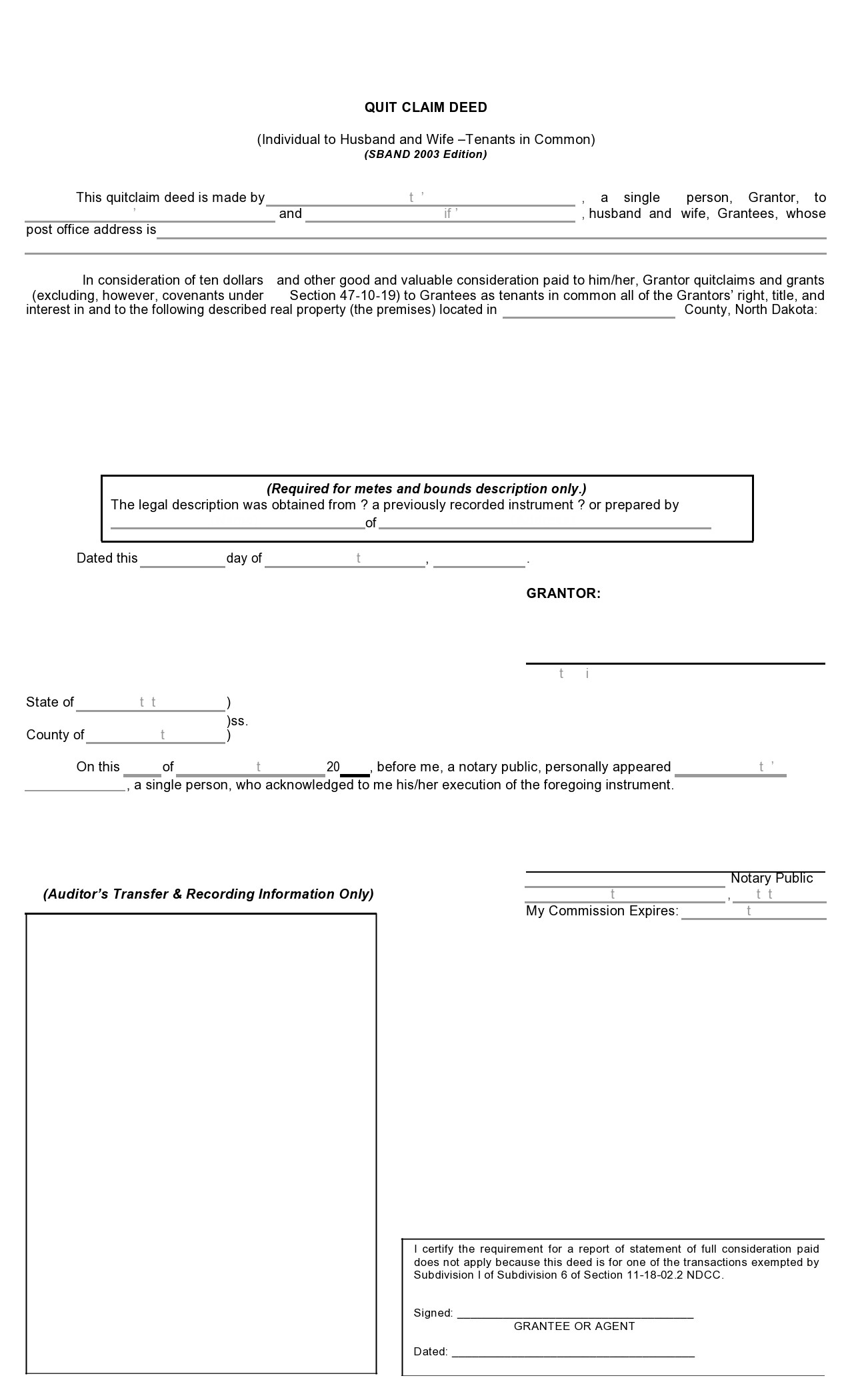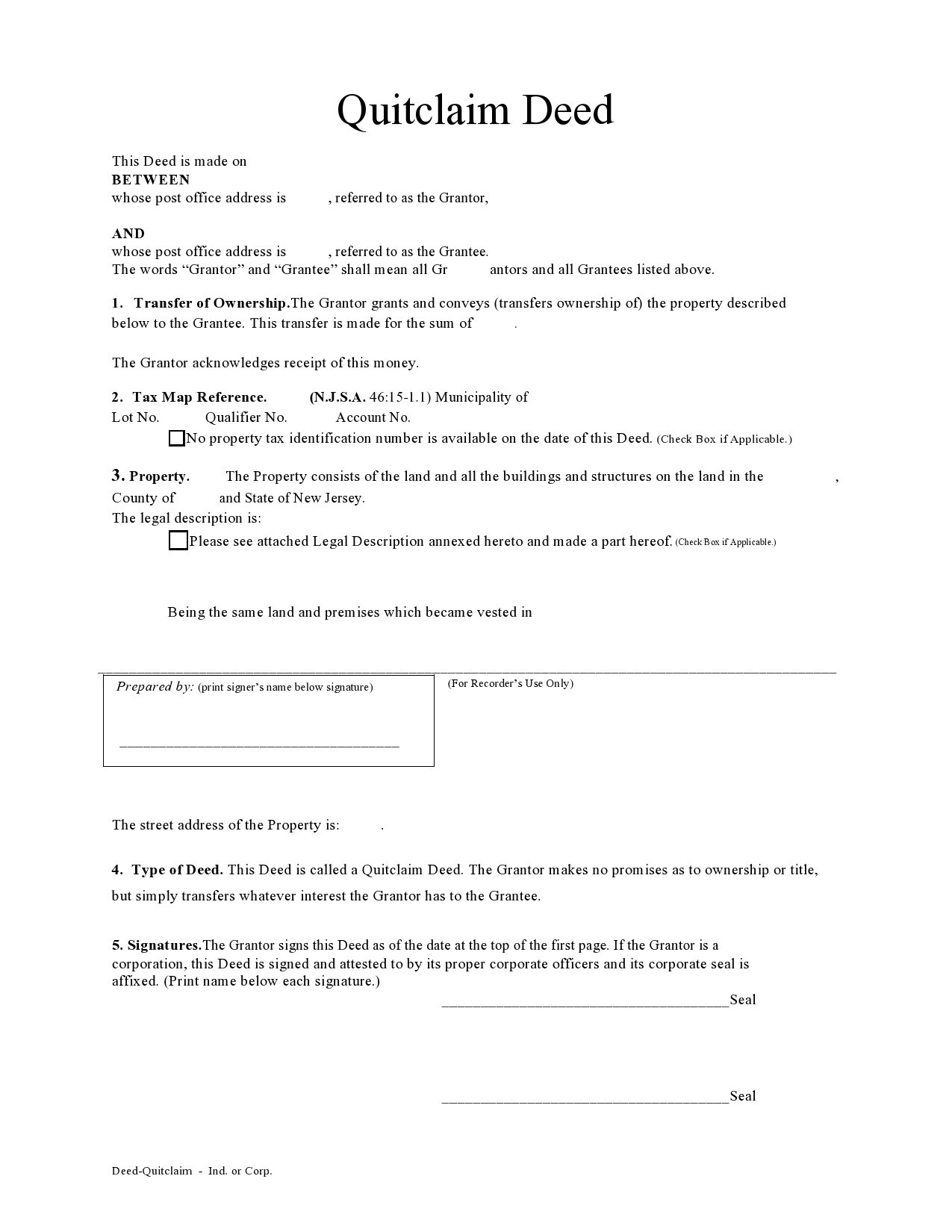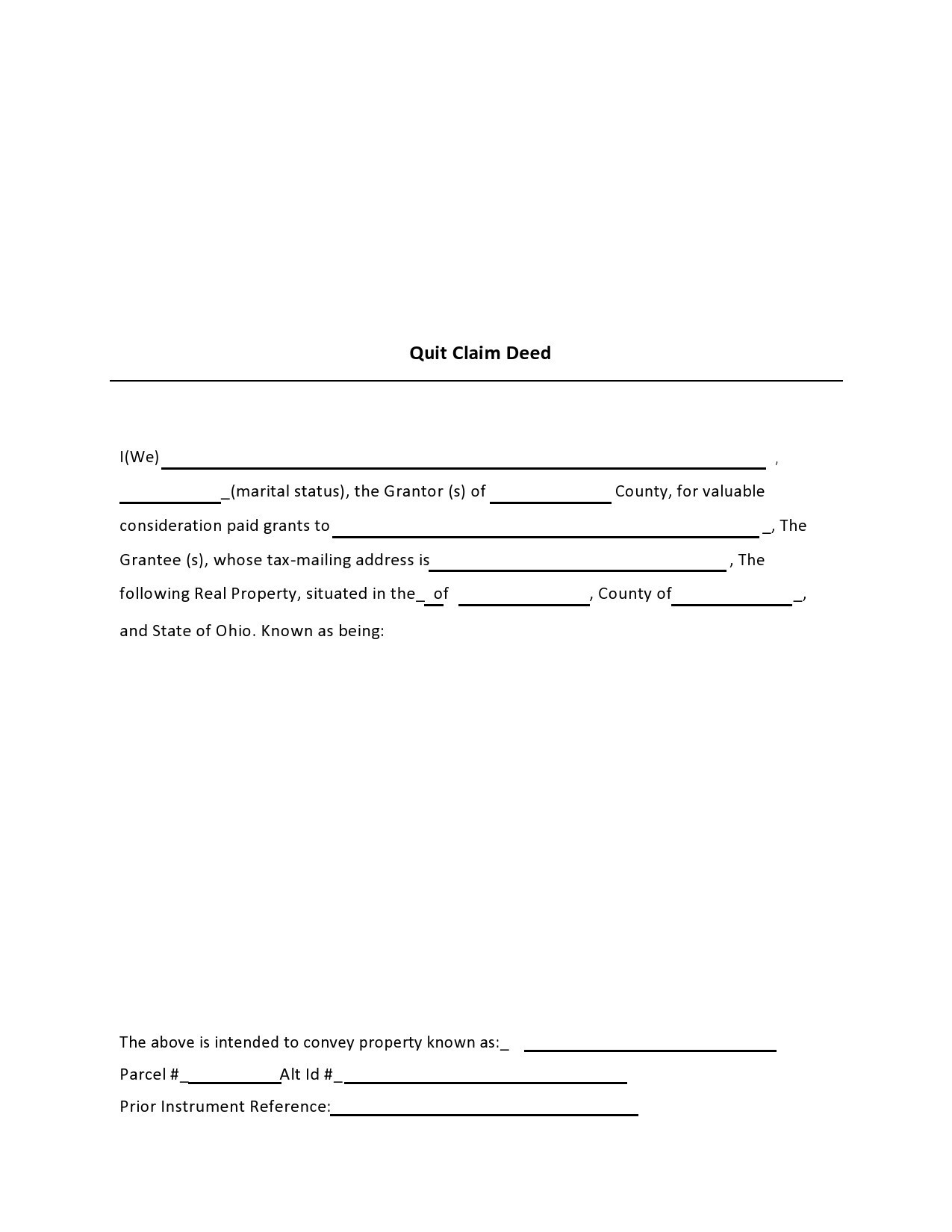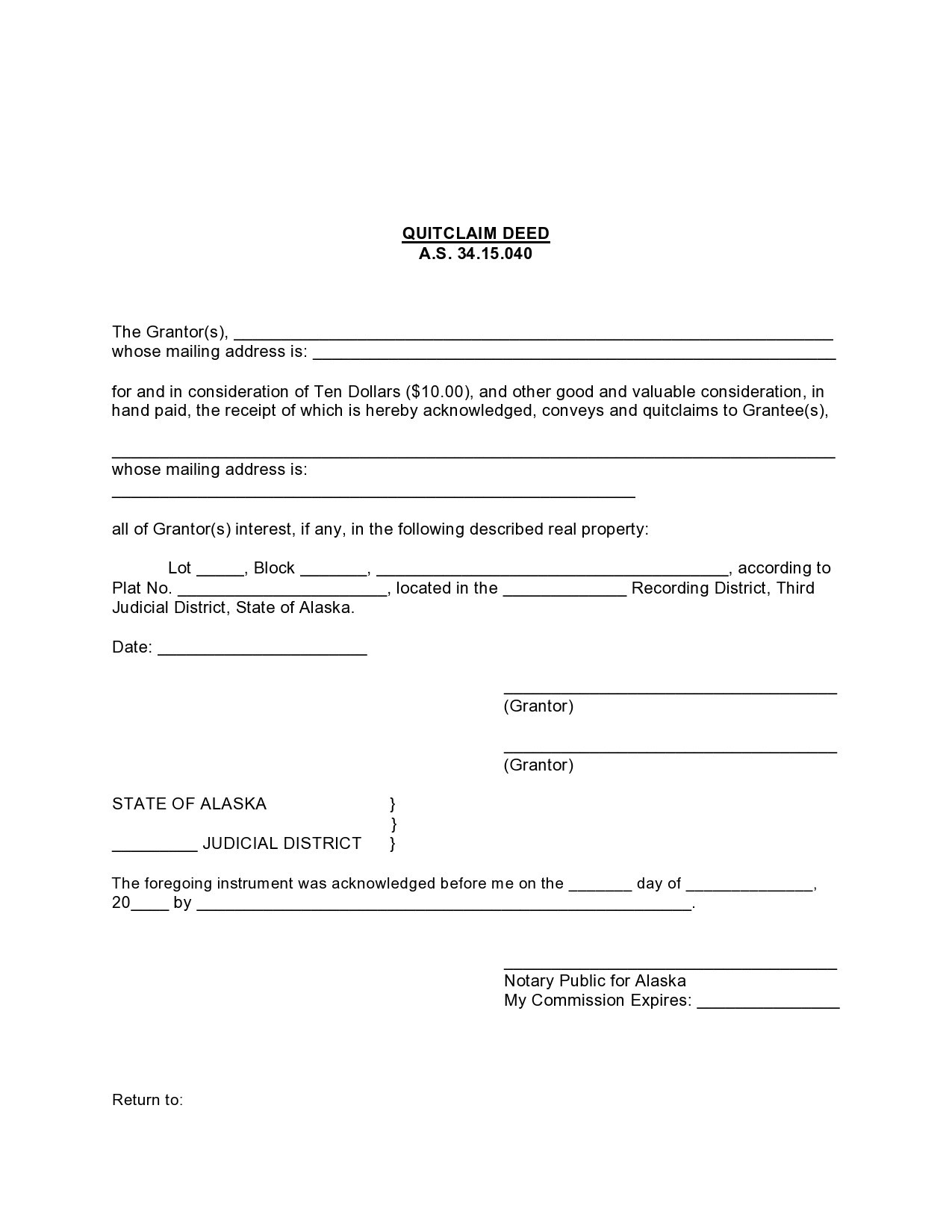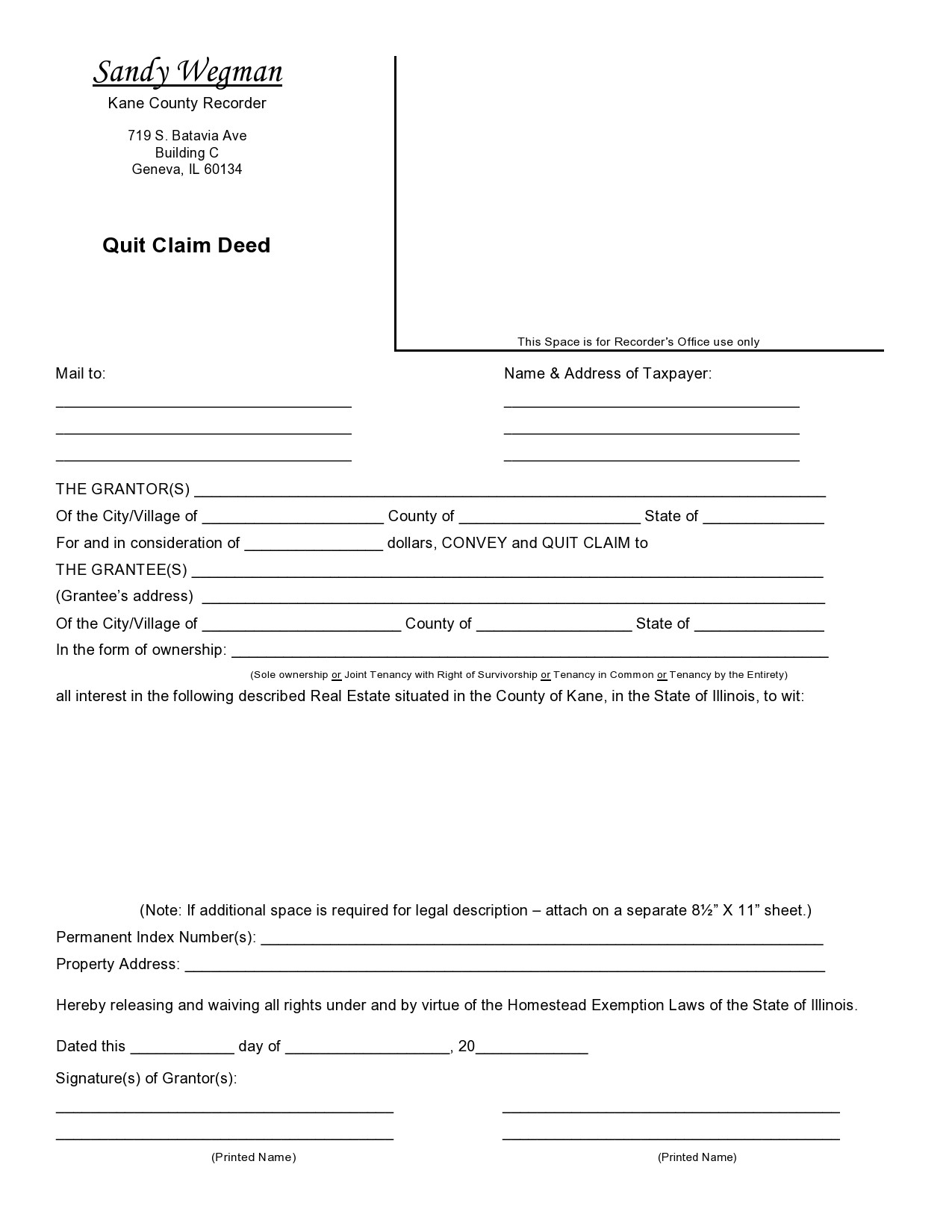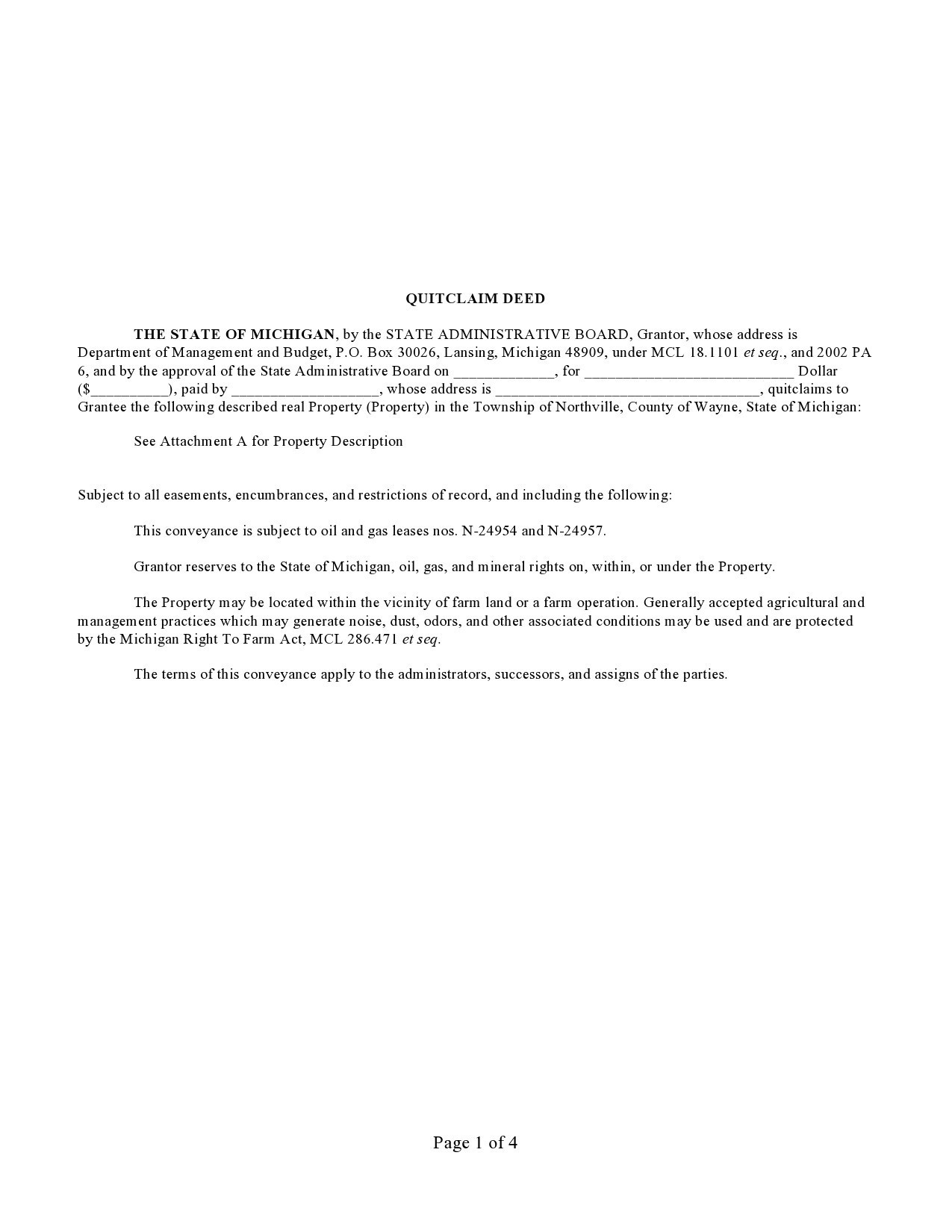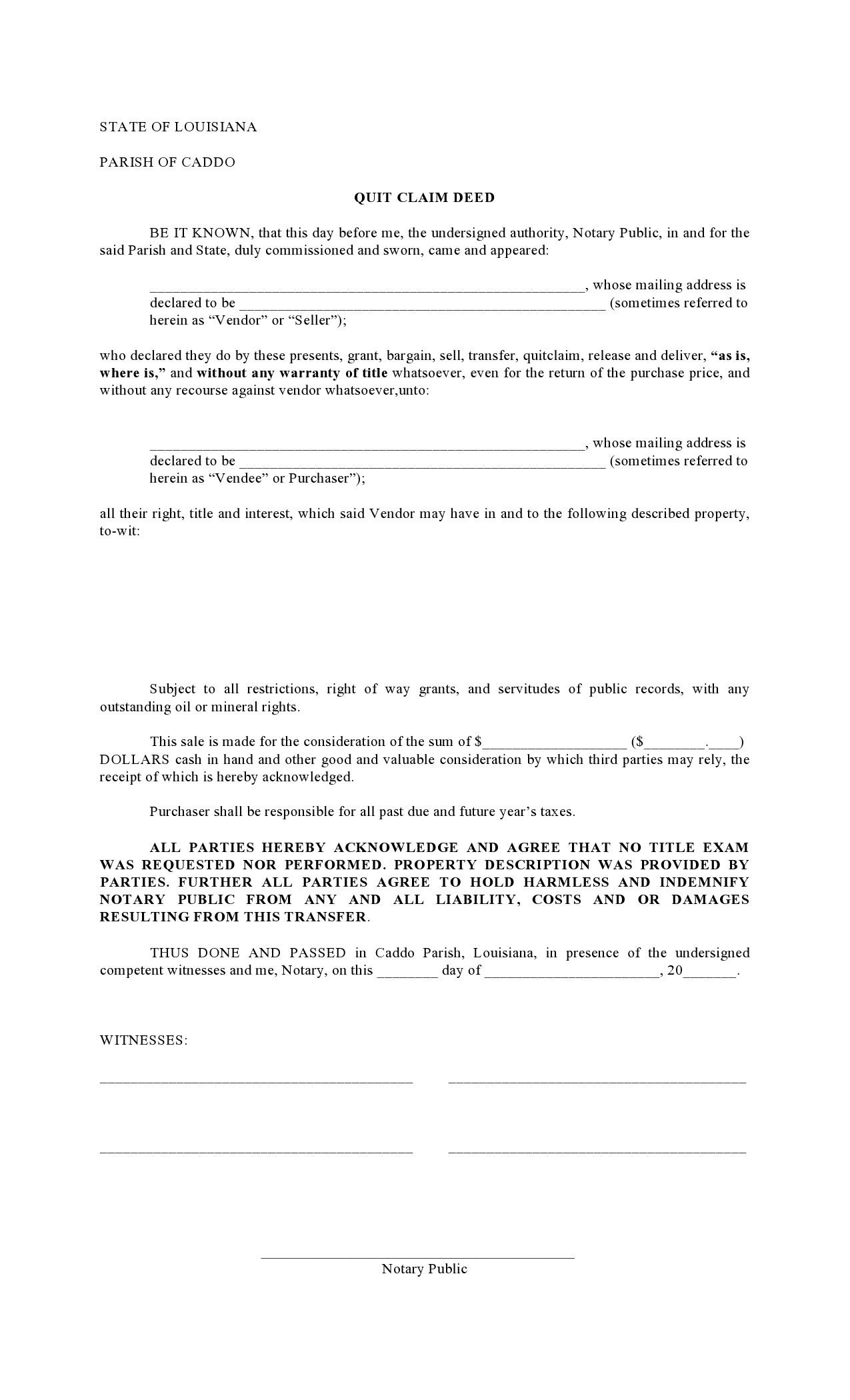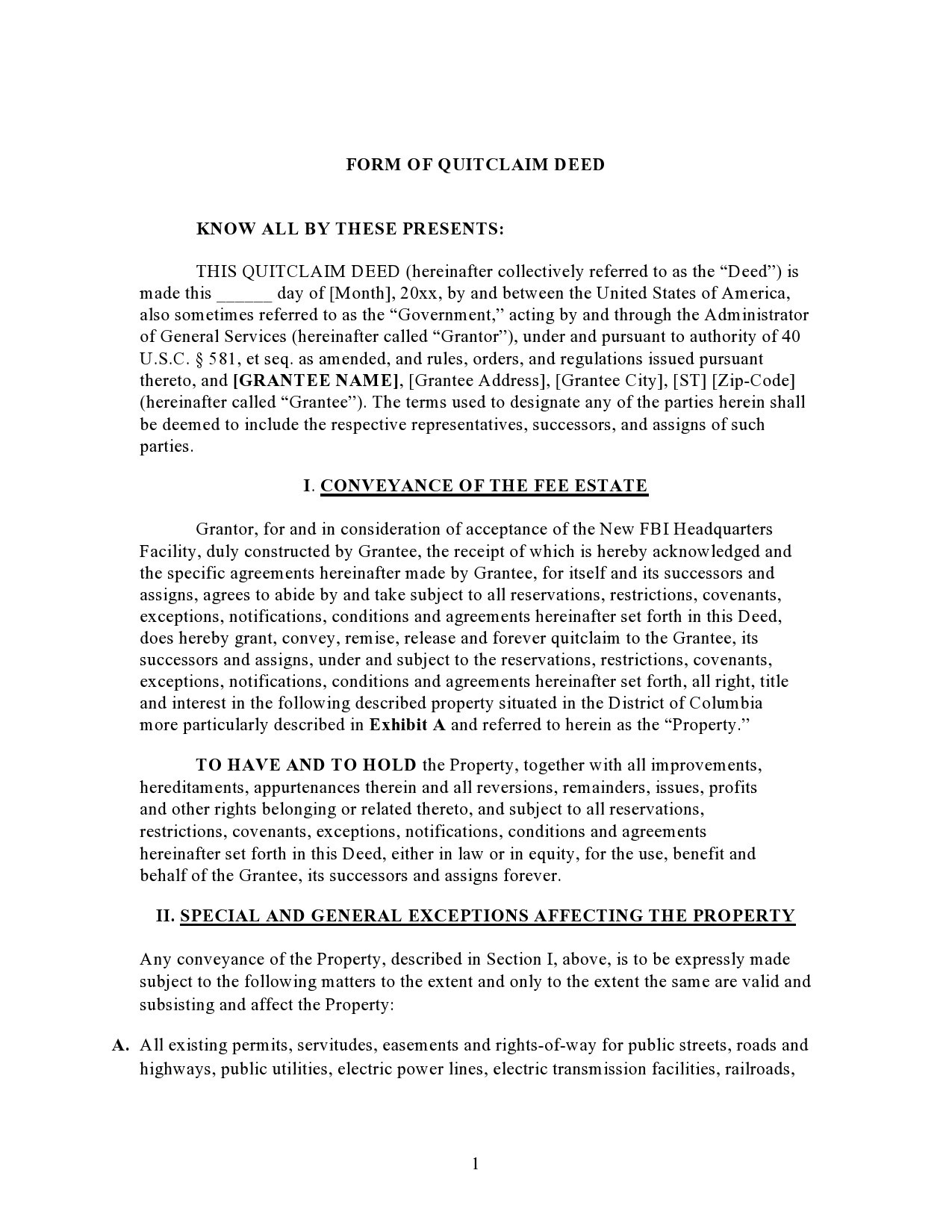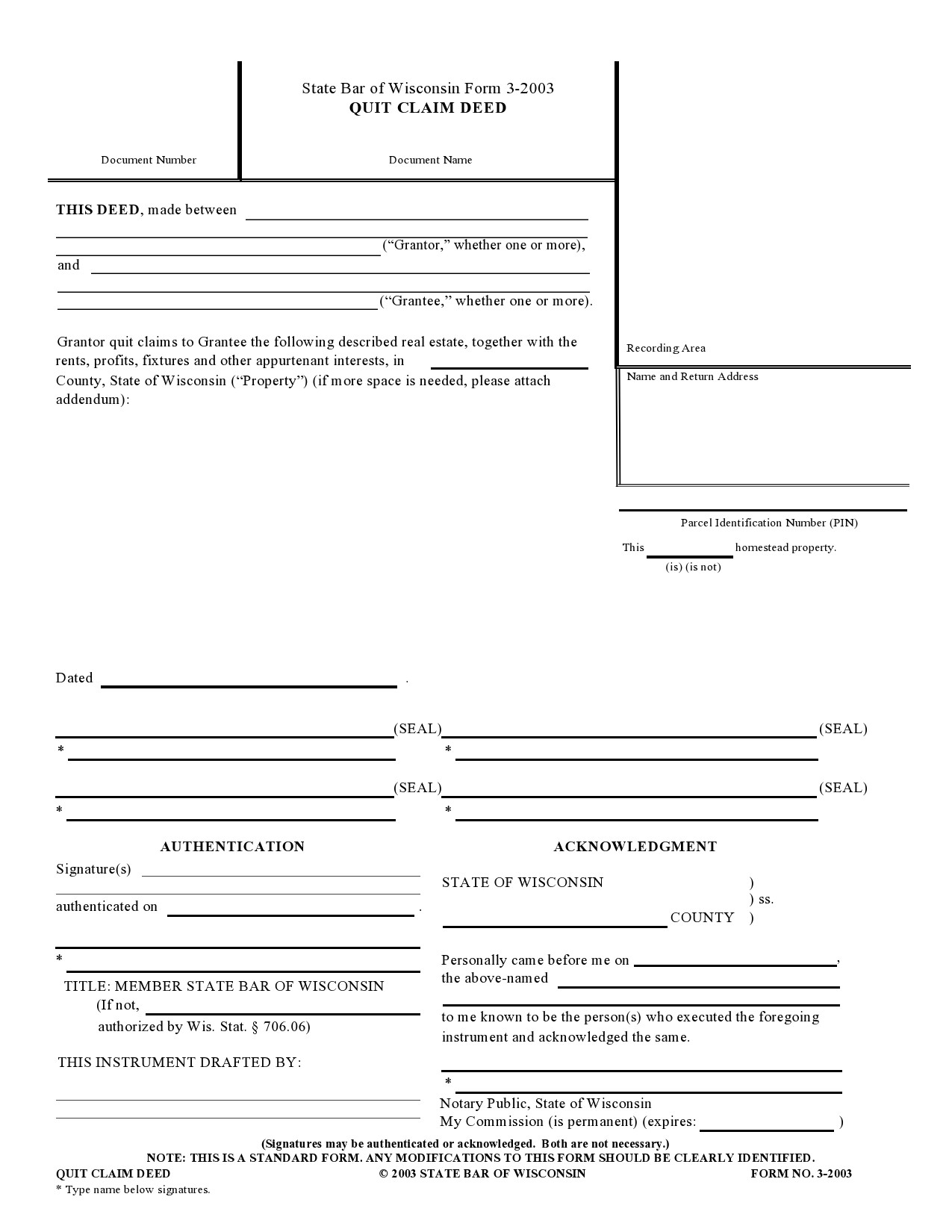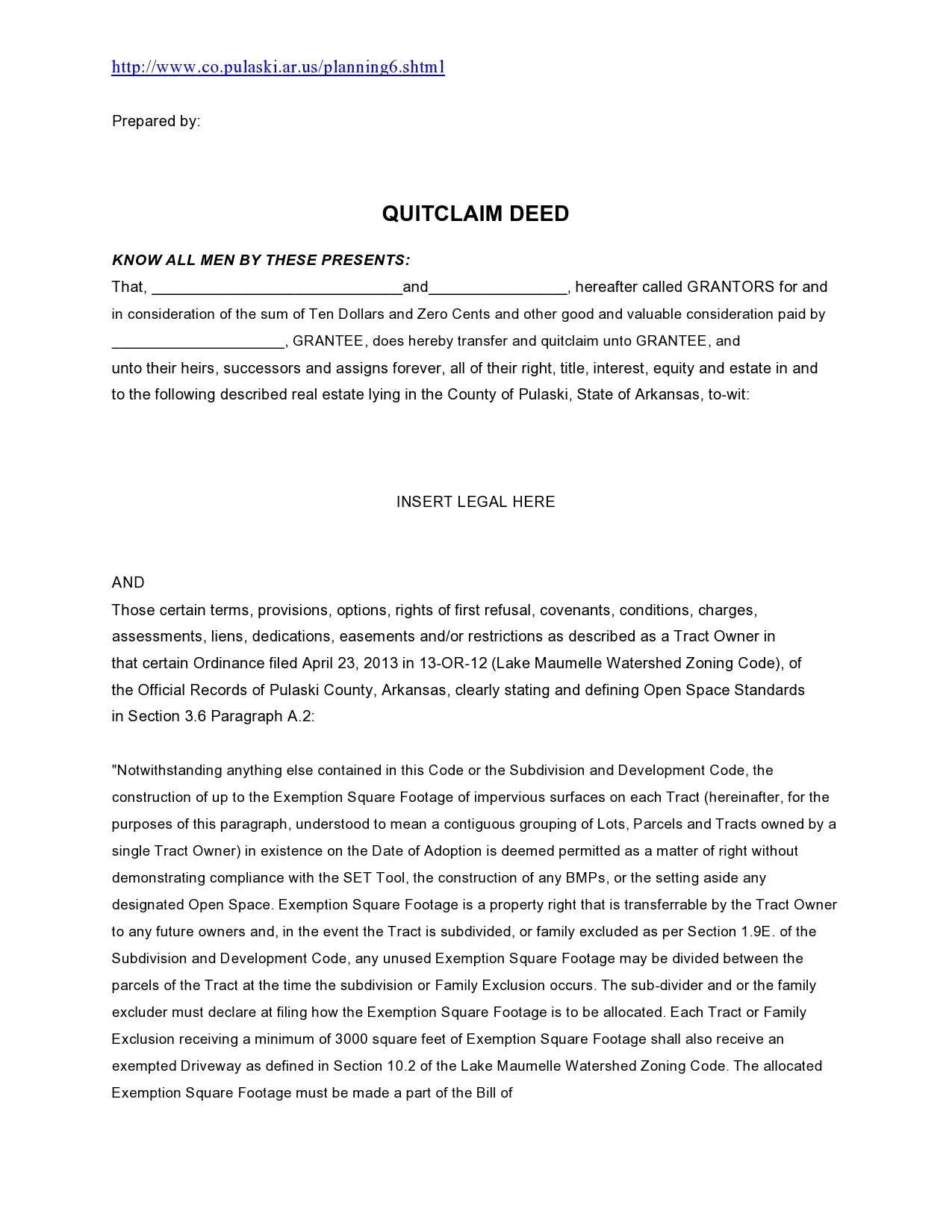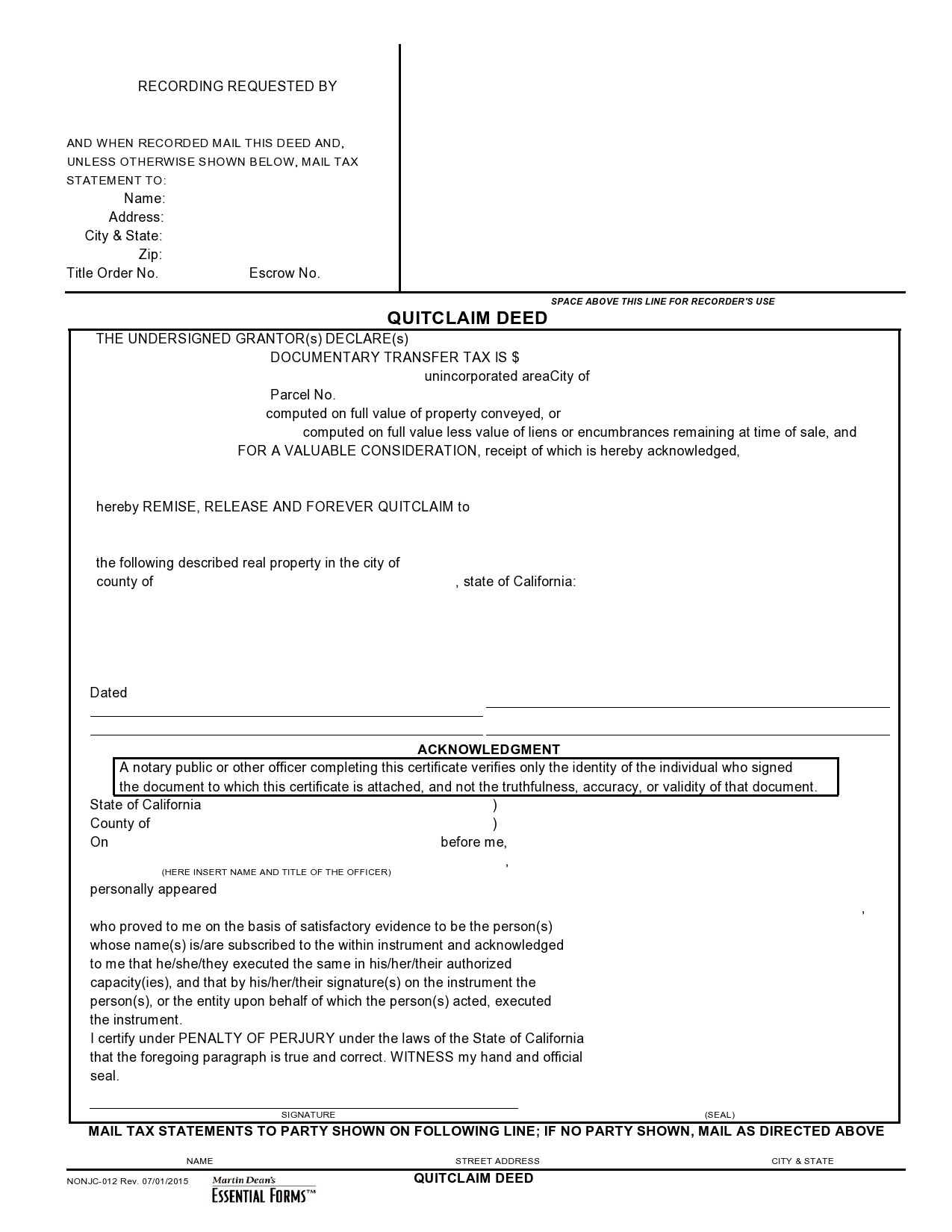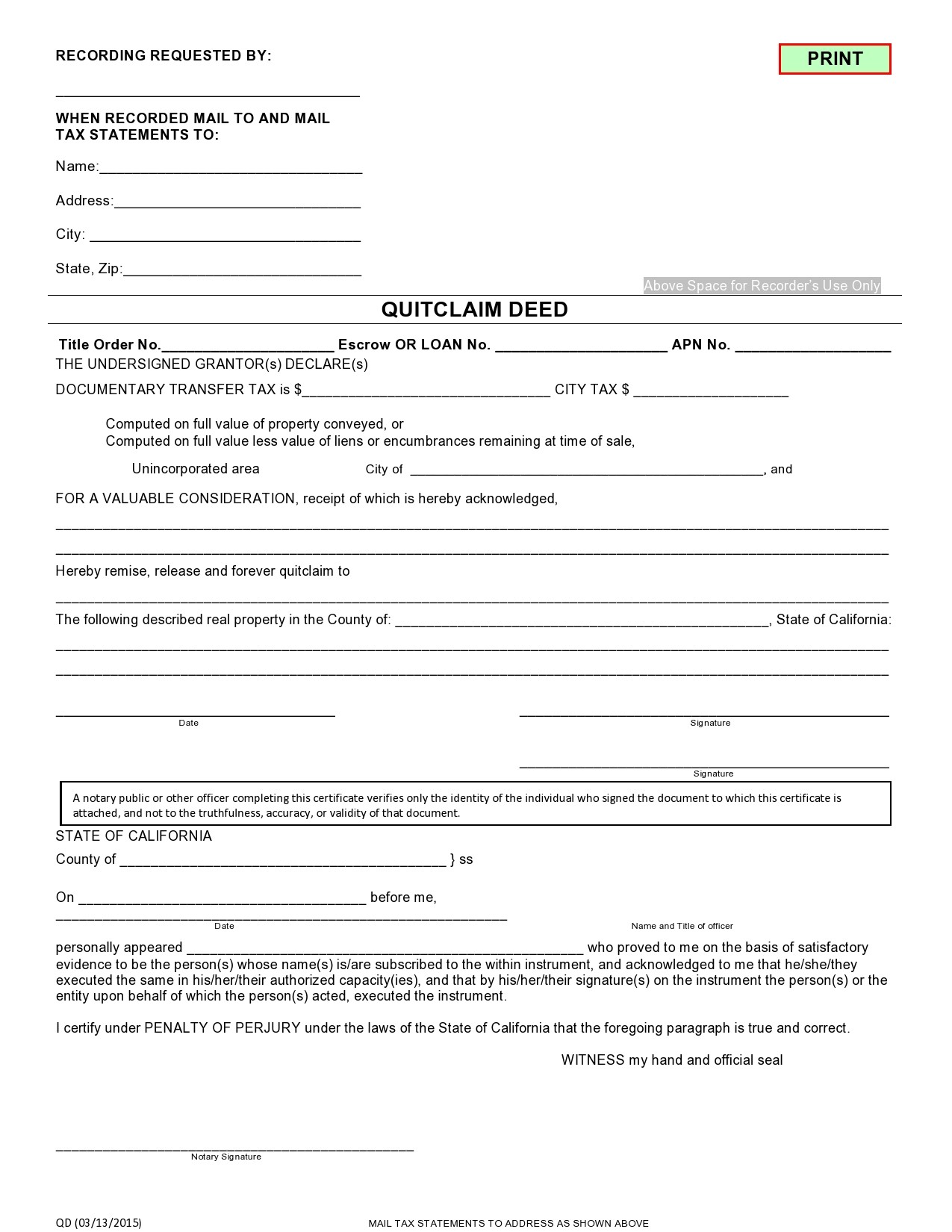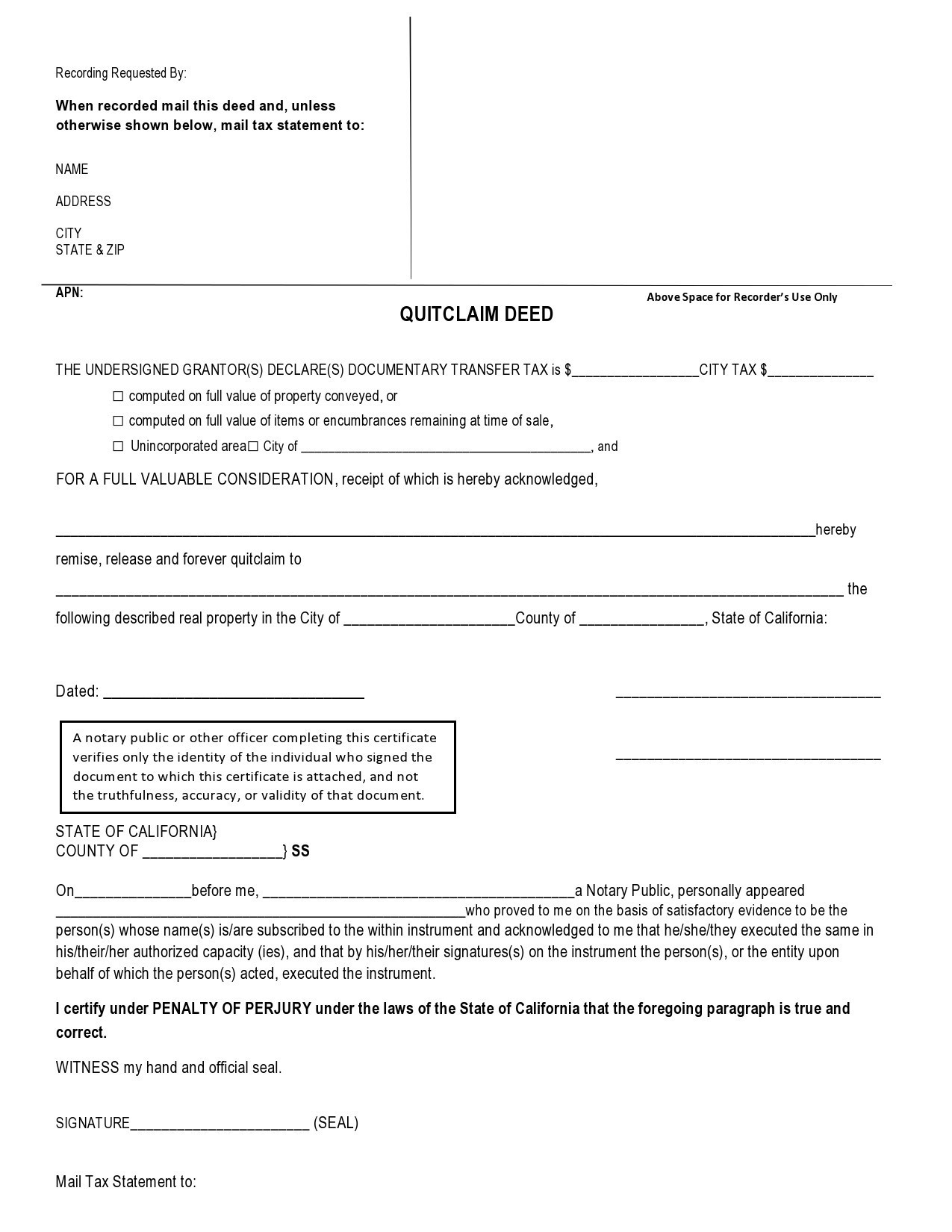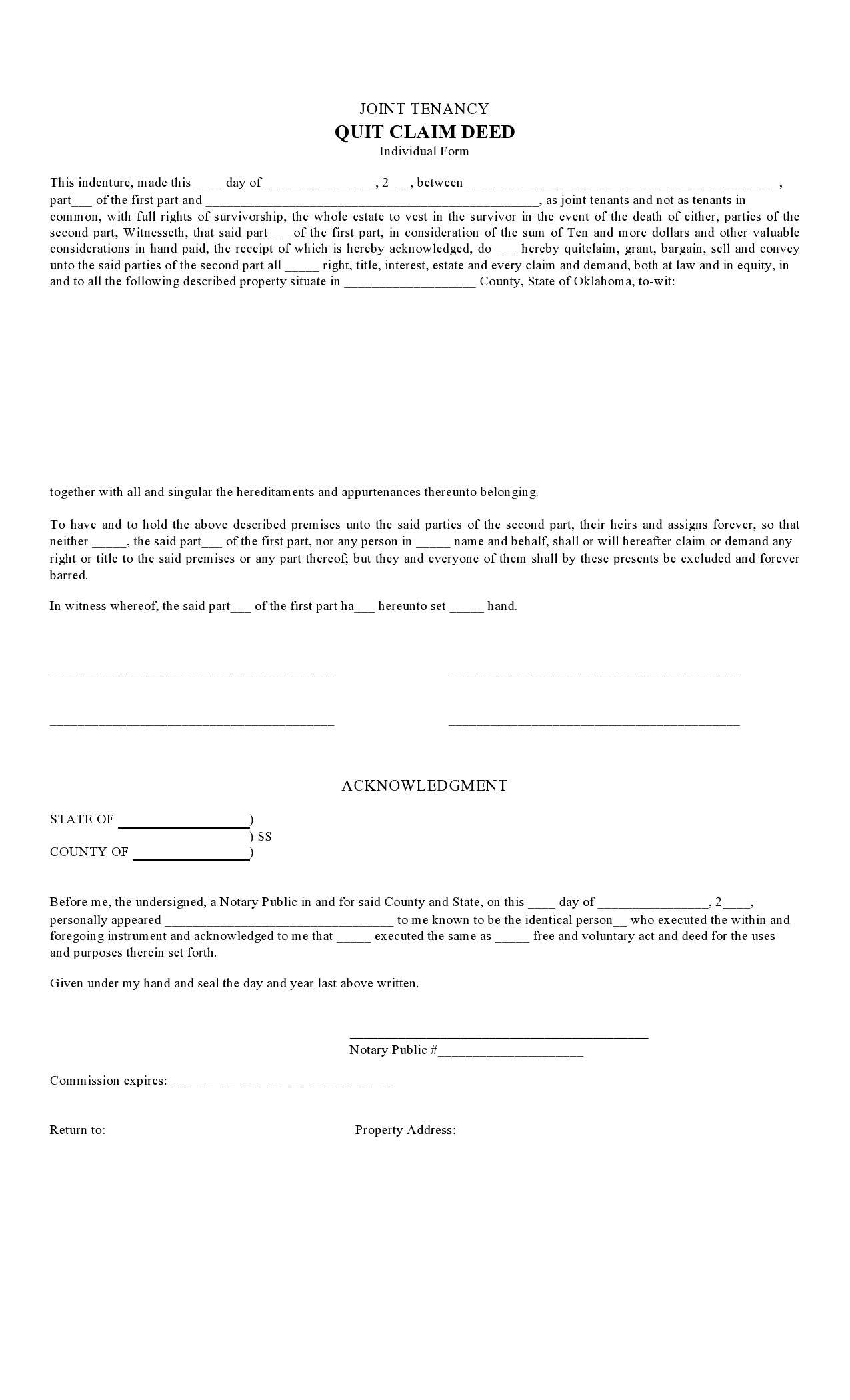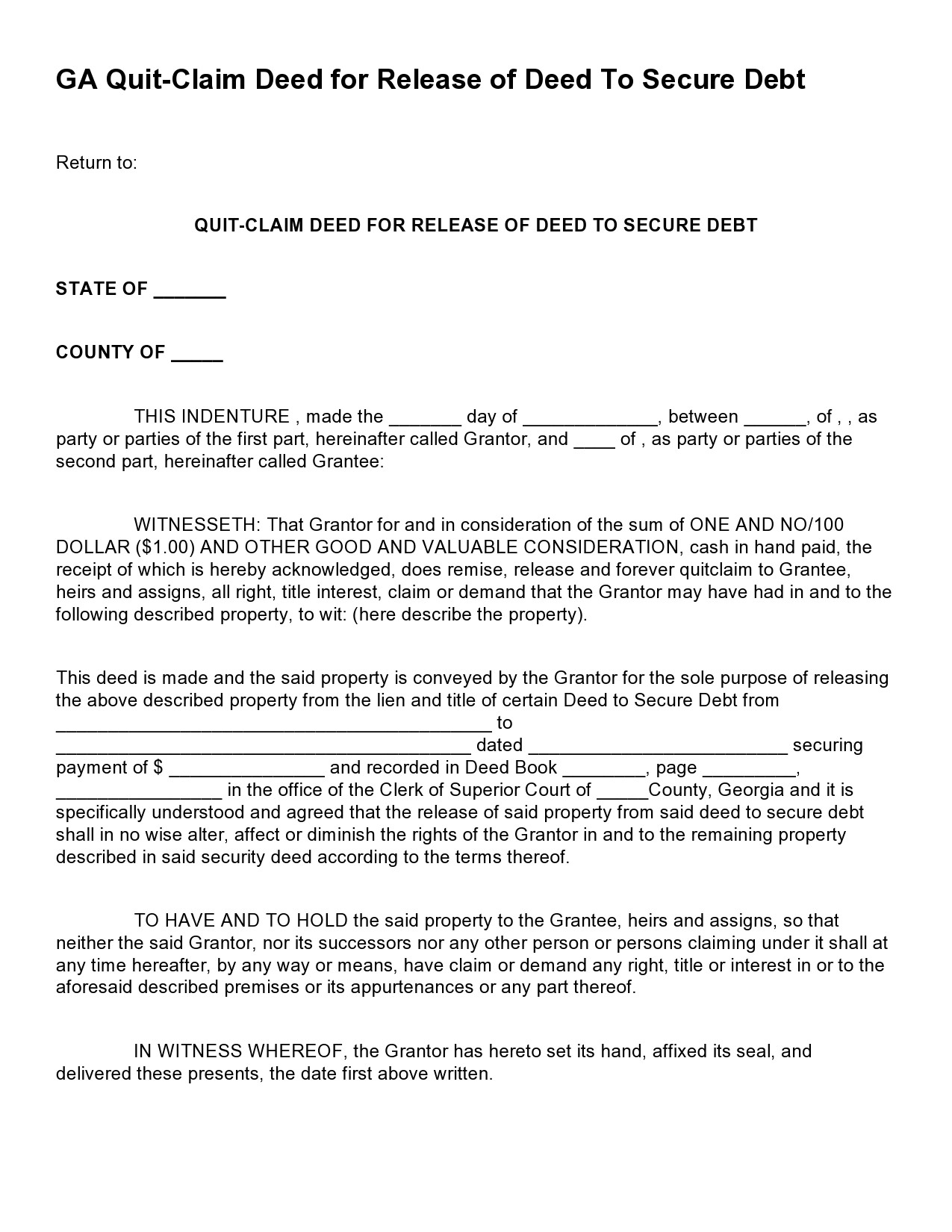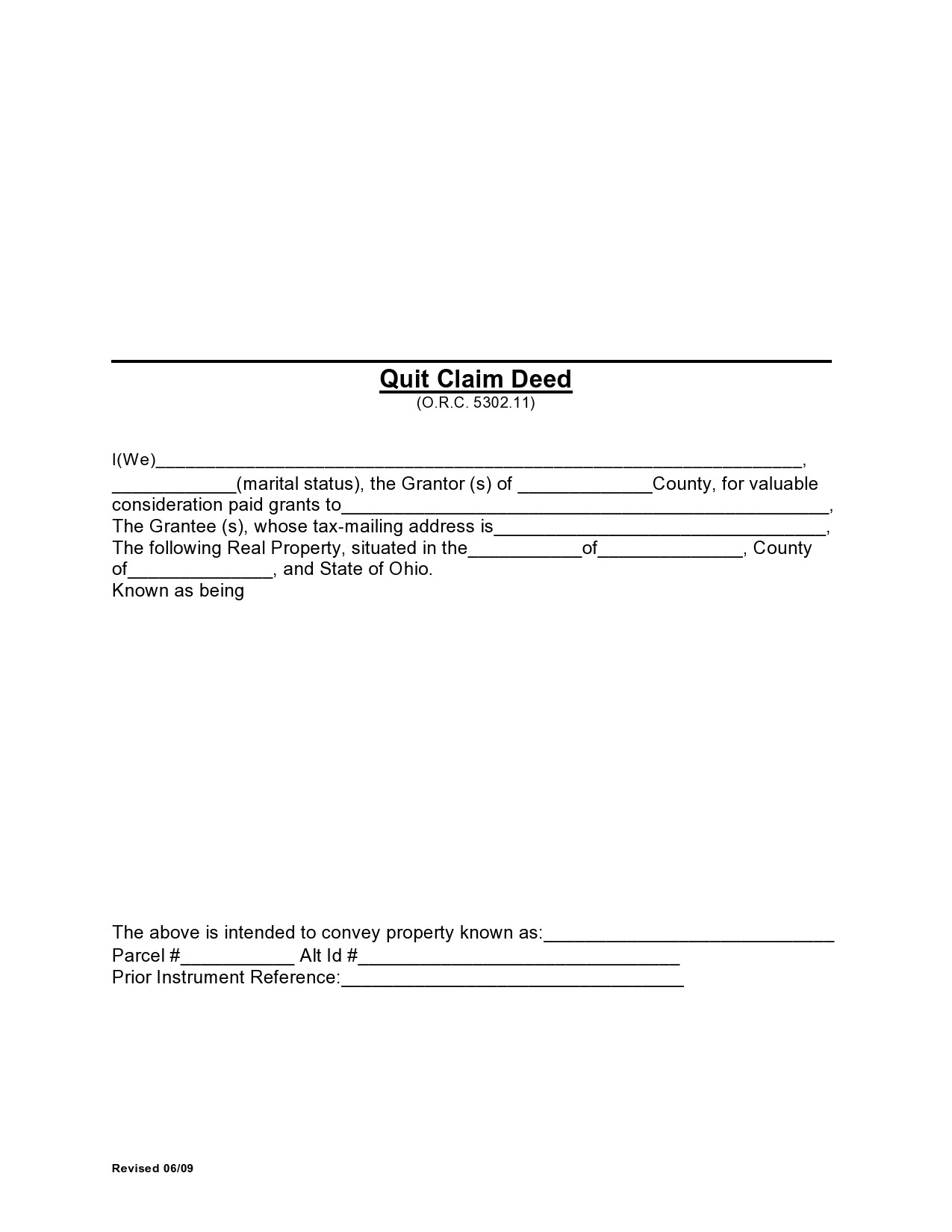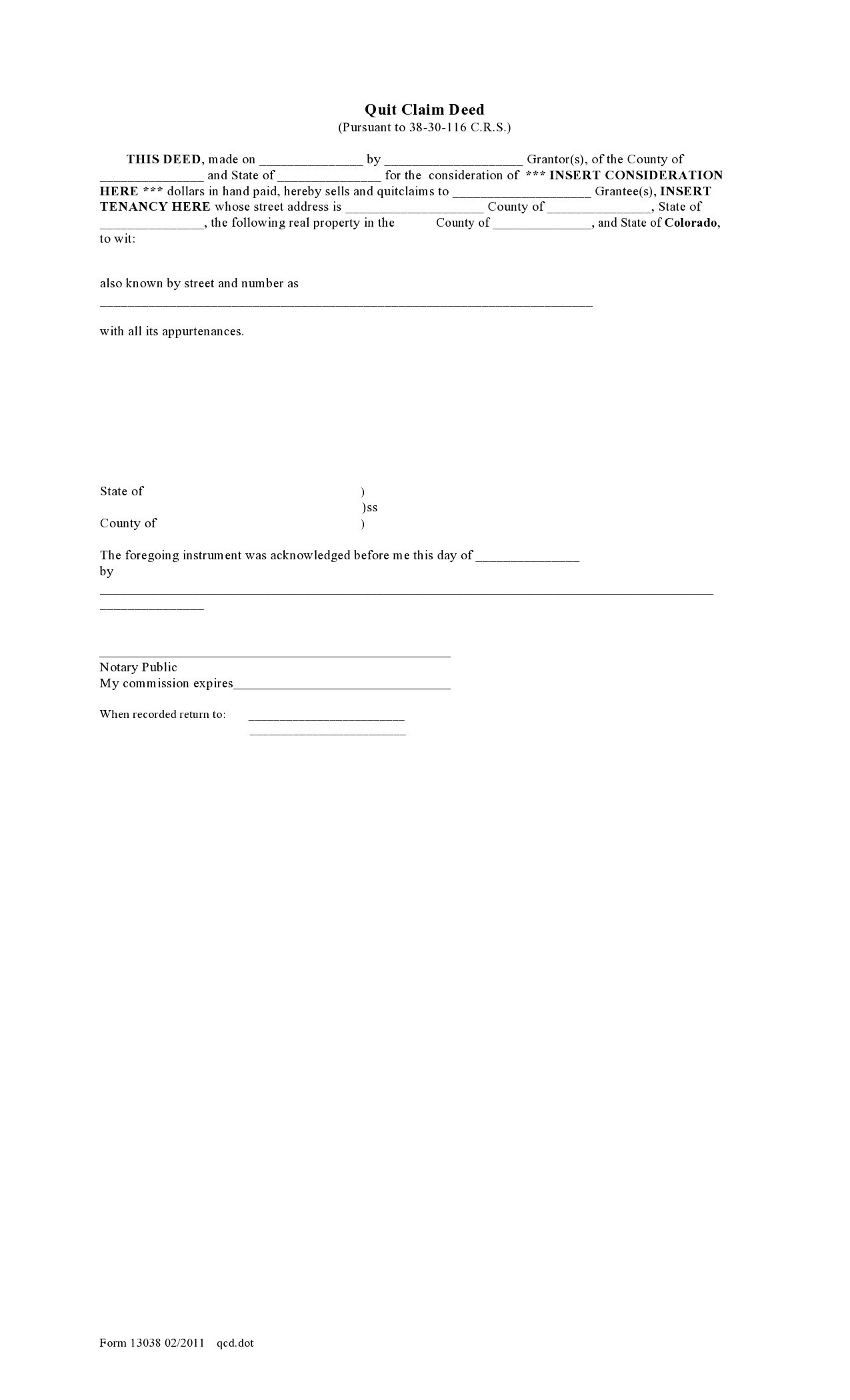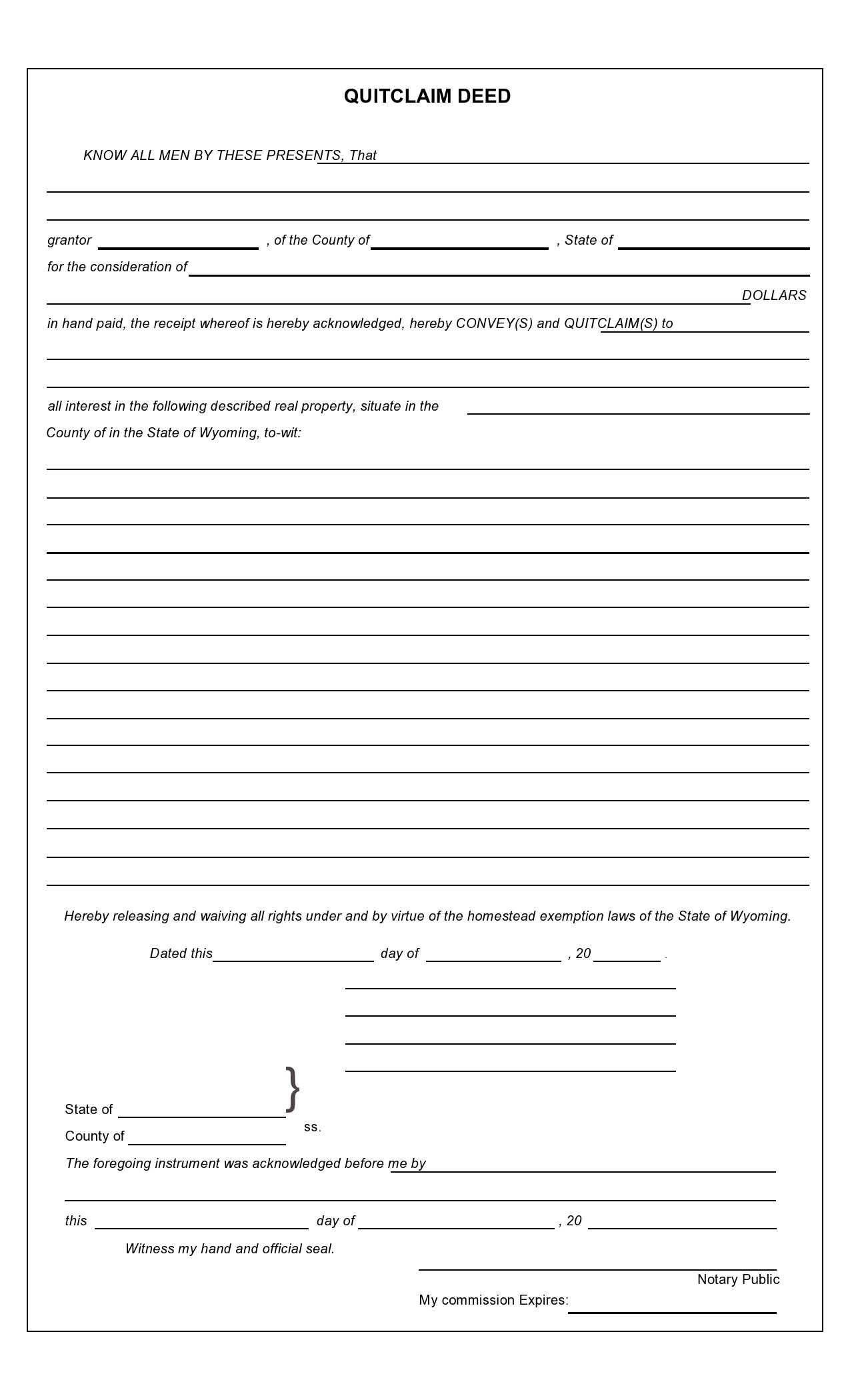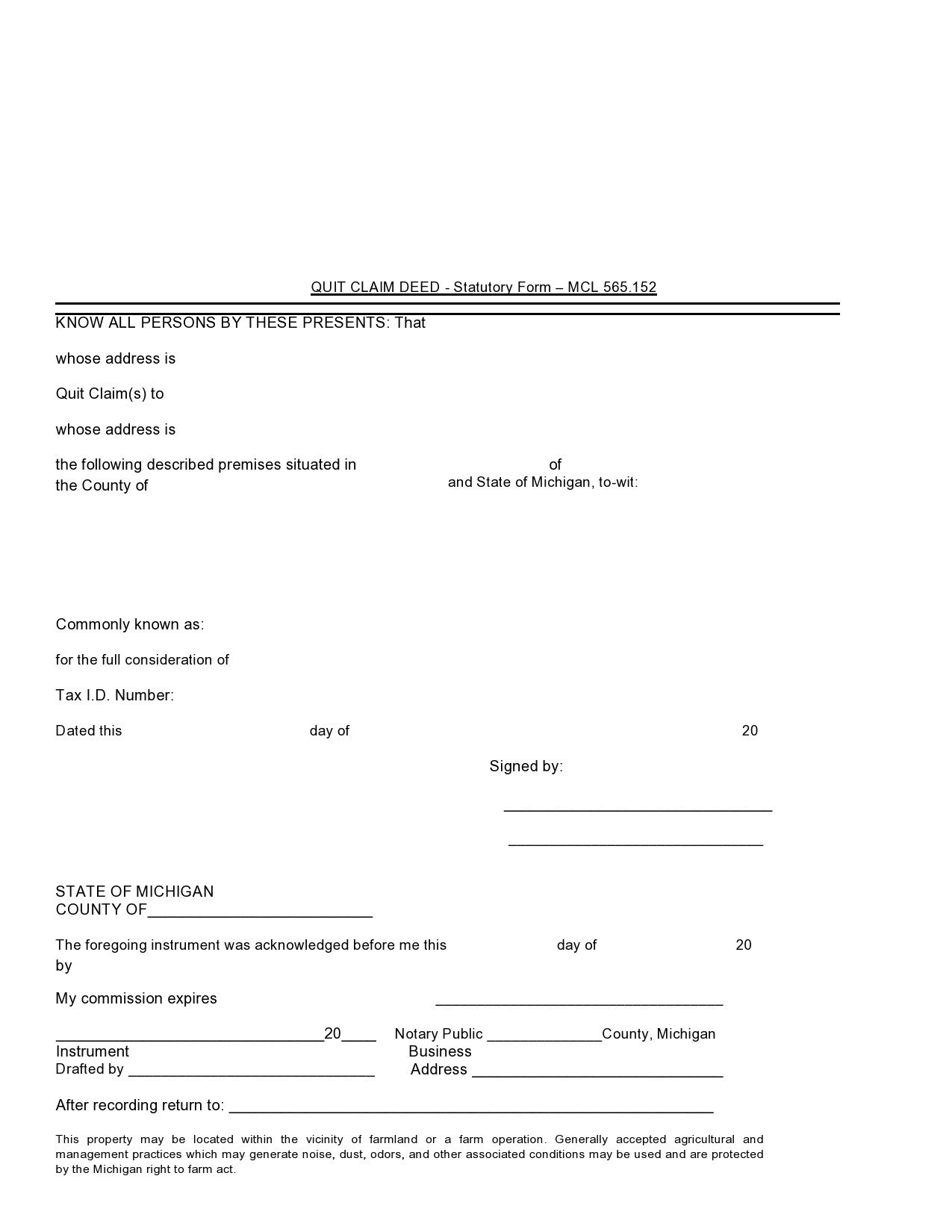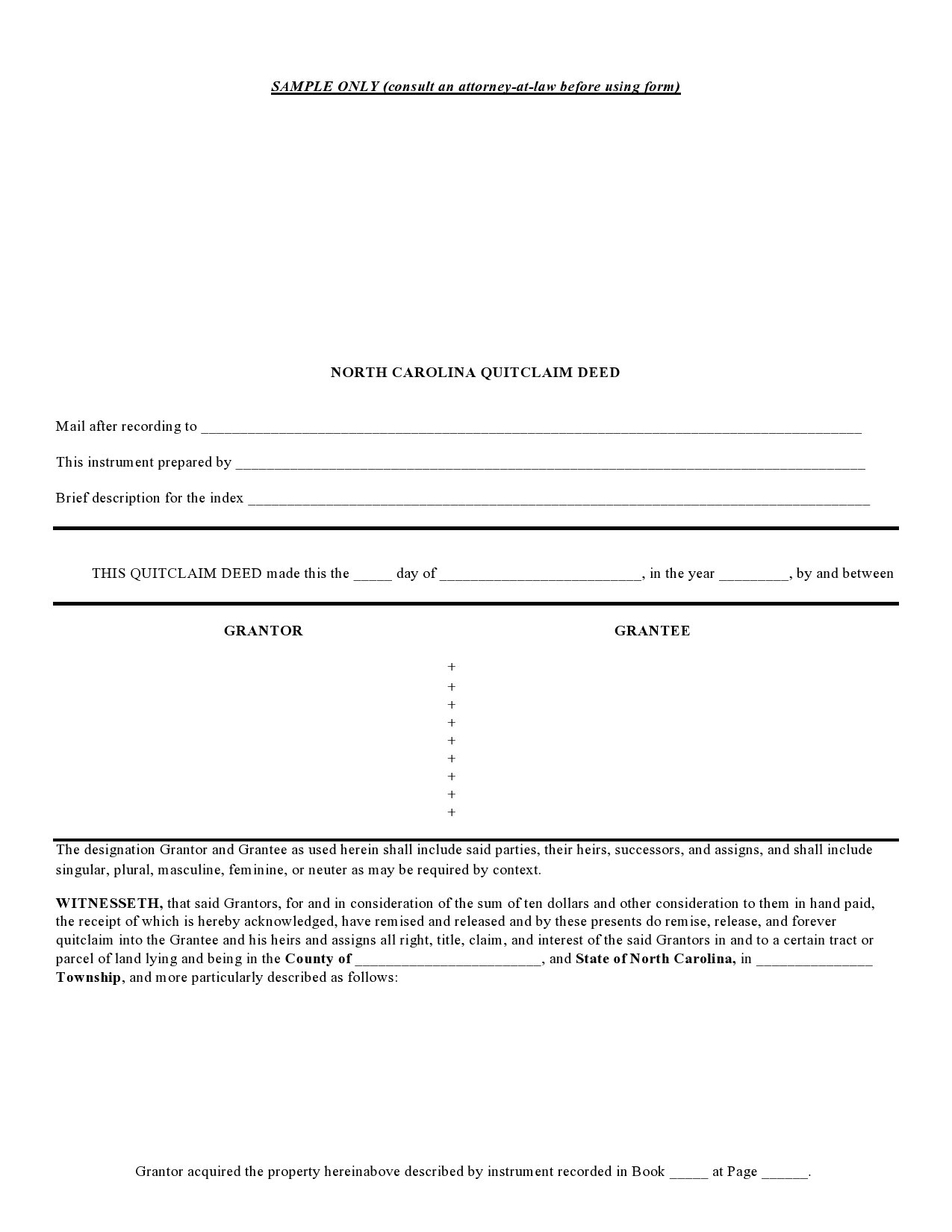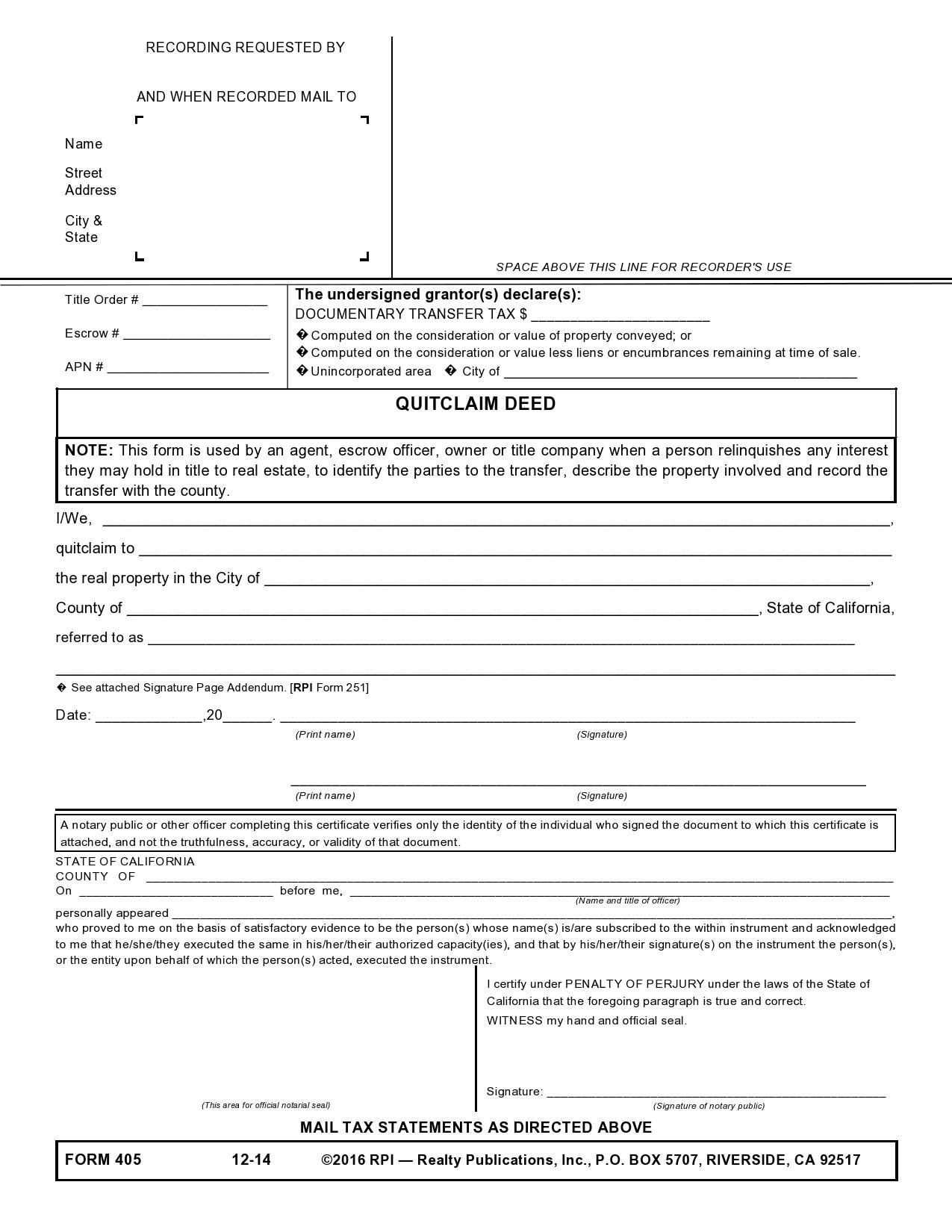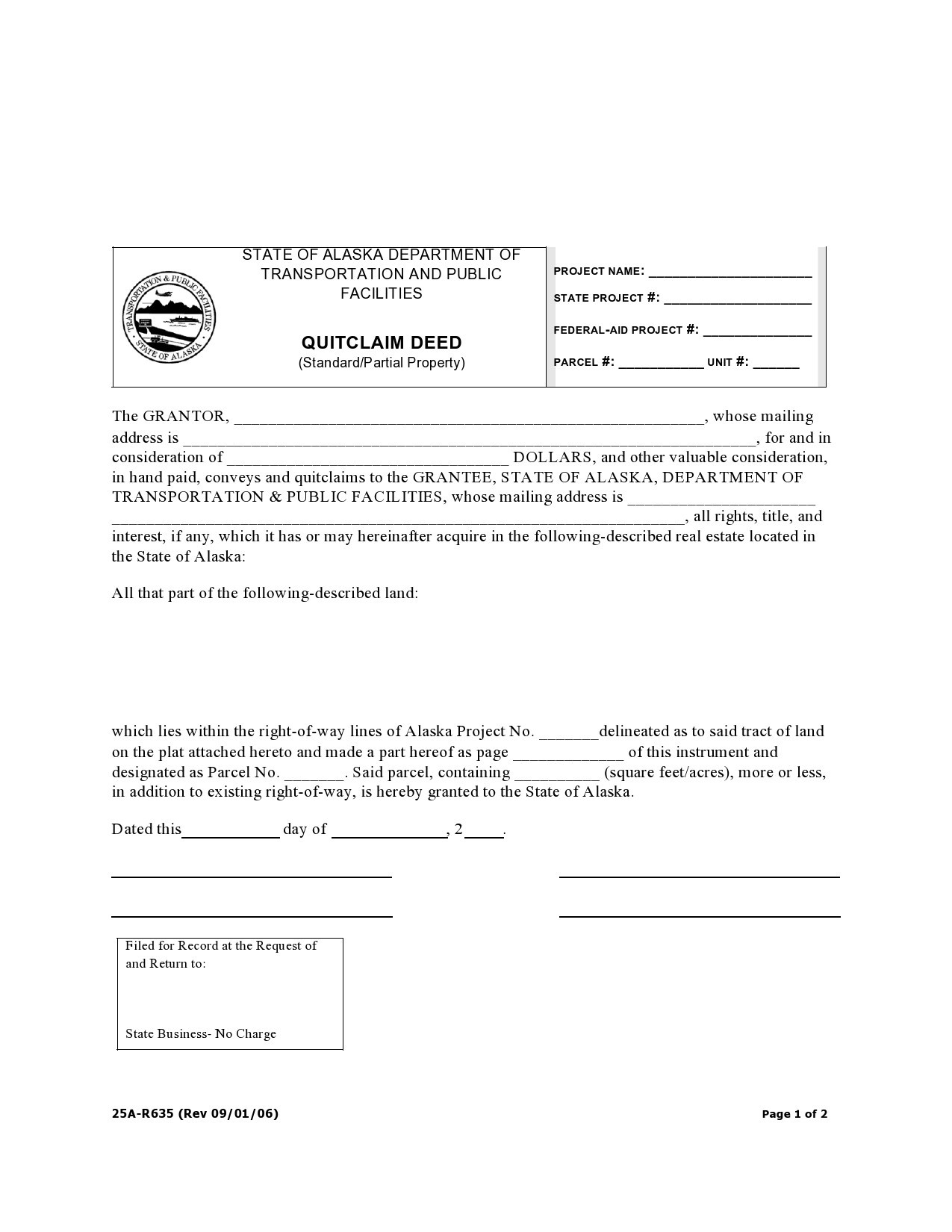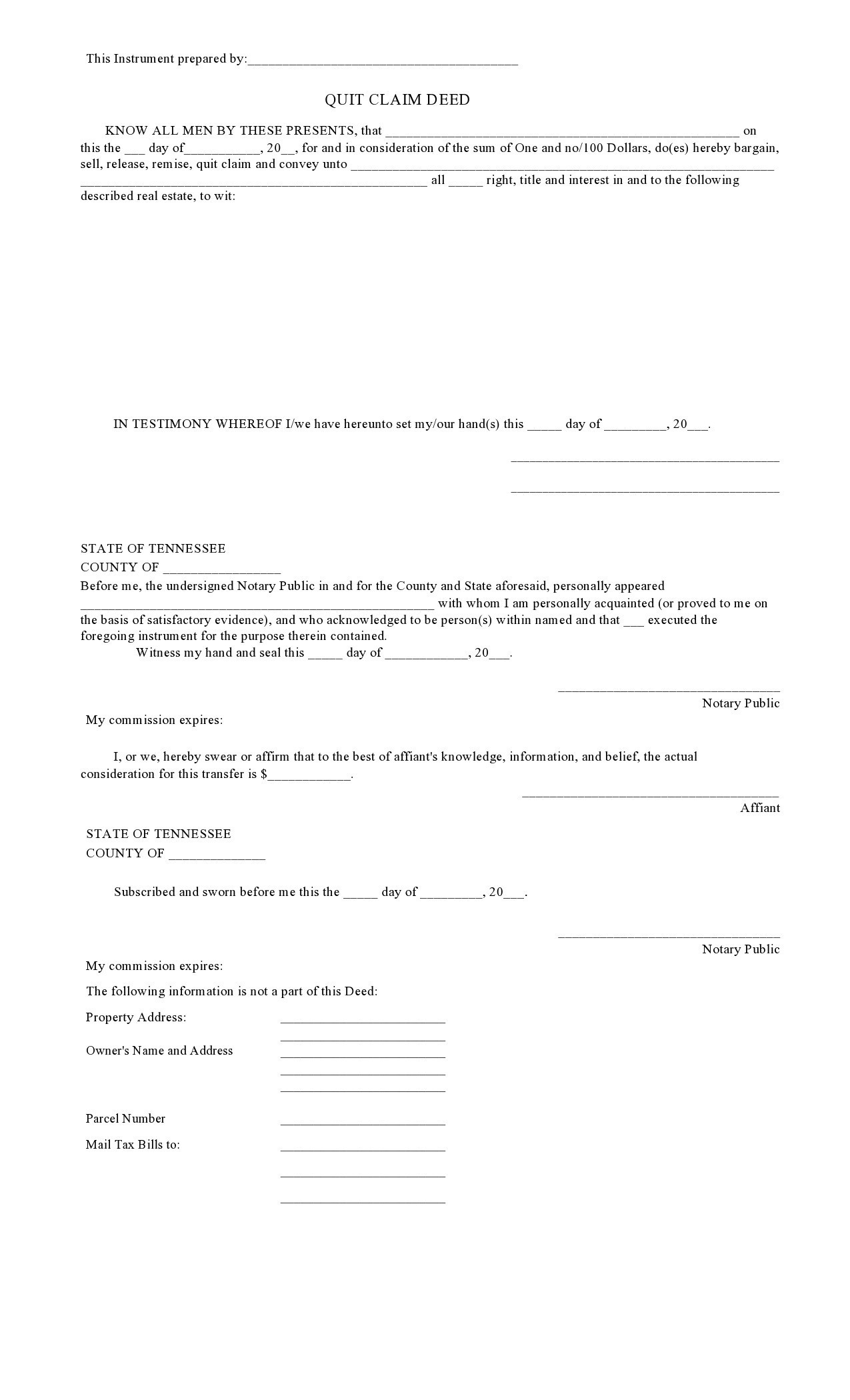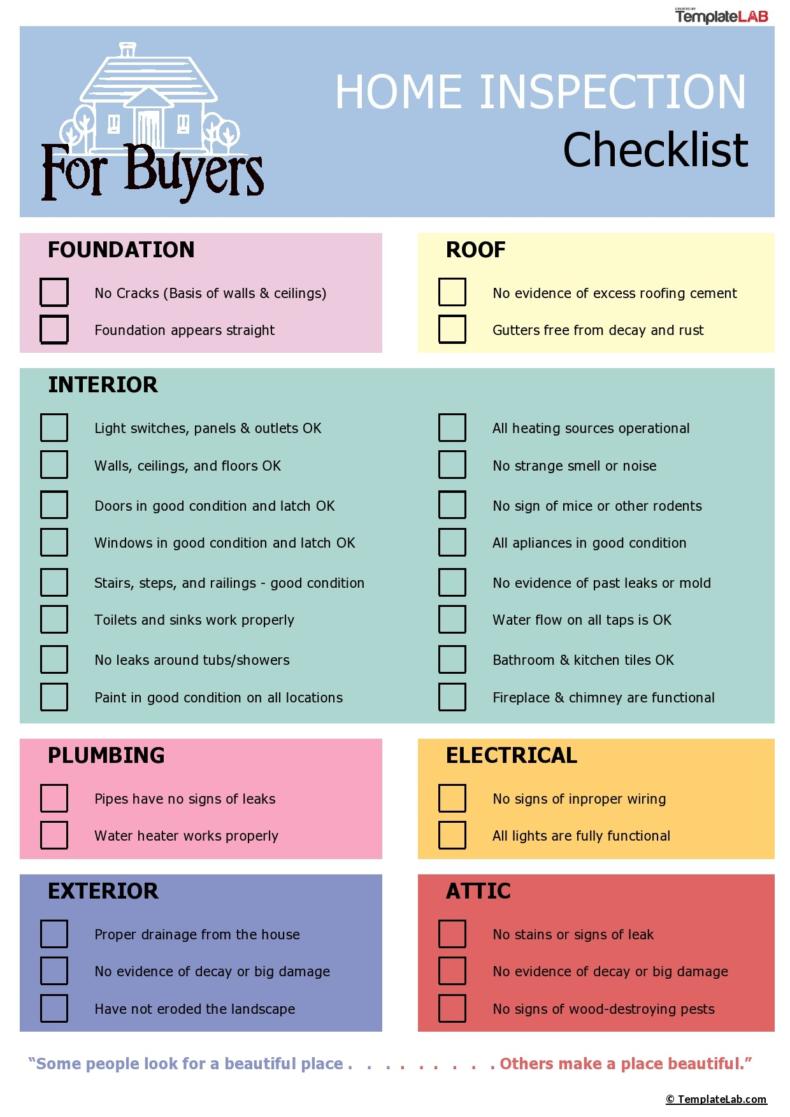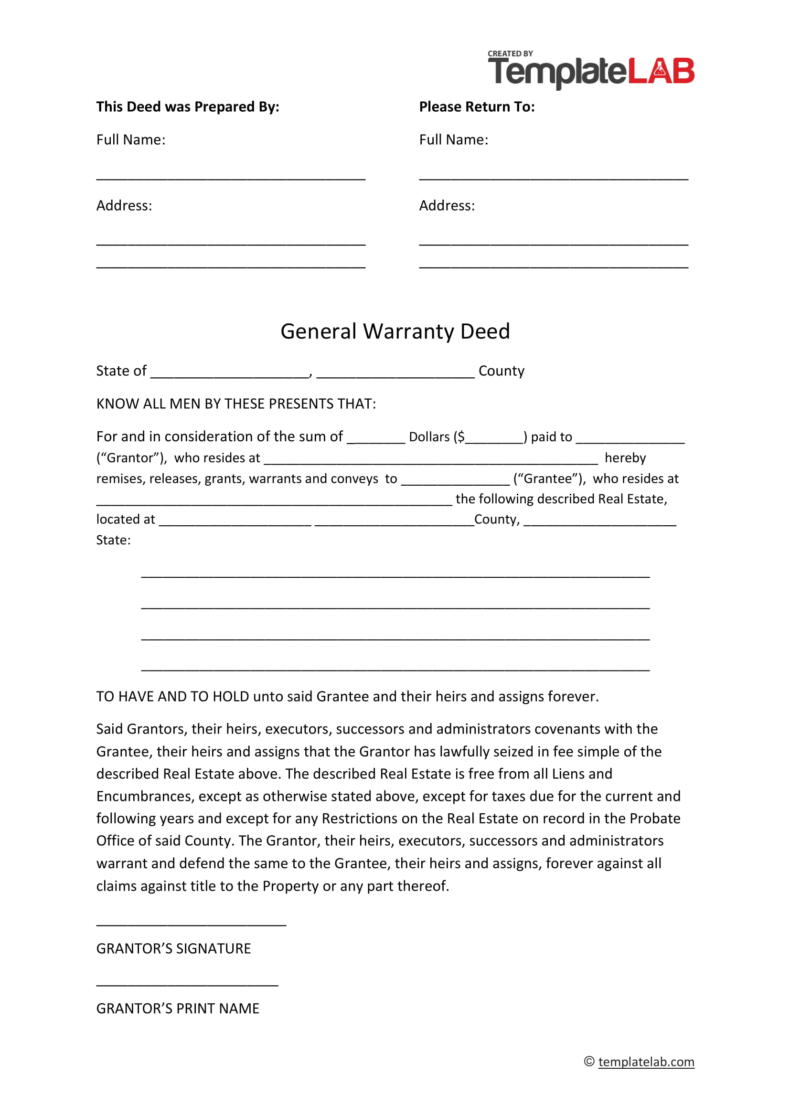Writing a quit claim deed form doesn’t have to be a struggle if you have the right quitclaim deed example to work from. A quitclaim deed template can be very helpful to have for a variety of circumstances, and you can write a really useful quitclaim deed sample if you know what the document needs to include to be effective for your purposes.
A quitclaim deed is legally binding, and it is critical to transferring property/real estate from one person to another person or entity. Quitclaims can be very helpful when there is a need to handle the transfer of property quickly. There are some limitations to what this document can do, but it does serve a variety of useful functions that might apply to your situation.
Table of Contents
- 1 Quitclaim Deed Templates
- 2 What is a quitclaim deed?
- 3 How to file a quitclaim deed?
- 4 Quitclaim Deed Templates
- 5 What is a quitclaim deed used for?
- 6 How do quit claim deeds work?
- 7 Quit Claim Deed Samples
- 8 When are quitclaims used?
- 9 How to write a quitclaim deed
- 10 Quit Claim Deed Examples
- 11 Quitclaim Deeds Can be Critical for Many Uses
Quitclaim Deed Templates
By State
What is a quitclaim deed?
A quitclaim deed is a legally binding document that is used to transfer property, usually real estate, from one person or entity to another person or entity. Quitclaim deeds include:
- a grantor who is the person transferring the property and
- a grantee or grantees that are the persons that are receiving the property.
This document is used when the grantor is promising to give up rights to the property and ownership of it. There are no warranties as to the nature or quality of the real estate title itself in these arrangements. Grantees who are receiving the property are not fully protected by this kind of transfer, and they will not get full ownership if there is an outstanding lien or another kind of legal claim against the property.
Quitclaims are used in real estate transfers that happen between people who trust each other. This might be done to correct an error in a will or to handle a transfer of property away from someone who does not wish to have responsibility for it. Quitclaim deed requirements can vary some per state, so you will be wise to look at the requirements that are necessitated in your own individual state before you draft your quitclaim deed.
How to file a quitclaim deed?
Quitclaim deeds are filed in the recording office of your state. There is usually a small fee that must be paid, and then you will need to take the document to the county court clerk’s office to file it. You will then be confirmed that the quitclaim deed is on file, and you will be given back the original copy in most cases. Sometimes the original will need to stay with the county clerk, and you will be given a copy of the document that is on file.
You will almost always have to have the document notarized when you deliver it to the county clerk, and most county recording offices have a notary on hand to take care of this service. This is often the easiest way to handle this part of the quitclaim process, but you can opt to take care of the notary portion in some states outside of the recording office.
Quitclaim Deed Templates
What is a quitclaim deed used for?
Quitclaim deeds are most often used to transfer the title of a property from one person to another quite rapidly. This document will never promise that the transferral will include ownership or title of the property as there can be other entities or people who also have claims. This is a good faith document that presumes that the grantor is unaware of owners or conflicts that might trump the person that they are naming in the quitclaim.
Some states also allow for implied good faith assumptions that the grantor is free to transfer the ownership and title of the property in a quitclaim deed. Quitclaim deeds only transfer the title of the property. The rest of the various parties that might have an interest in the party might still have liability and responsibility for the property as well as a claim to it.
How do quit claim deeds work?
Quit claims are created to convey the title and whatever ownership rights that the grantor has to another entity or person. These are the kinds of ownership that this deed might convey to someone else:
- Sole ownership when the property is owned by a single party or entity
- Joint tenancy, which is when the property is owned by two or more people that have the right of survivorship. This means that when one of these parties dies, the property will pass to the surviving person. Each of these people must agree to sell their legal interests in the property as well.
- Tenancy by entirety which happens when there is joint tenancy between a legally married couple
- Tenancy in common, which is ownership between two or more people who might have equal or different percentages of ownership, each with the right of survivorship and the right to individually sell their legal interest in the property.
- Community property which is obtained by a spouse during a marriage. Community property is owned by both spouses and is only recognized in 10 states in the US.
Quit Claim Deed Samples
When are quitclaims used?
Quitclaims are used when a divorce happens, a marriage takes place, when the chain of title defect is involved, or when a title defect is in place that causes clerical errors of various kinds. Family members might also use this document to transfer their ownership of a property to a child or relative, or this document can be used in estate planning as well. Business quitclaims are used to transfer property and assets between company subsidiaries, and this is also a document that is used when there is a public auction sale of a property, and the buyer assumes the risk of the defective title.
Real property owners can use the quitclaim document as a means to help clarify property ownership in a divorce or separation as well.
How to write a quitclaim deed
A quitclaim deed will need to have certain information in it to be legally binding and useful as a document that proves ownership has been transferred to another person or entity.
- Grantor. This is the full legal name and the mailing address of the person or entity that currently owns the property and will be transferring the ownership of it. You can not use nicknames in this section of the document, or you might invalidate your quitclaim deed.
- Grantee. This is the full and legal name of the person who will be receiving the property’s title. This is the new property owner, and you need to be sure that you do not use nicknames or have incorrect information in this part of the document.
- Consideration. This is the amount that is being paid for the property if money is changing hands to finalize the quitclaim.
- Location. The city and county of the property, as well as the full address, need to be included in your quitclaim. You also need to indicate any information about the property that is relevant for the identification of it as a unique location.
- Legal Description. This section can be left out unless you need to have specifics listed in the documents that help to solidify what the property is like. You might have acreage that needs to be mentioned or outbuildings and assets that are part of the property that you feel need to be included in the description for the sake of clarity.
- Parcel Number. This is the number that is assigned to the property by the tax assessor. This is typically present on your property tax statement if you are not sure what the parcel number is for your property.
- Preparer. This is the name and mailing address of the person who prepared the document. This could be you, or it could be a legal expert who worked on the task for you.
- Signatures. You will need to be sure that the grantor and grantee both sign the document. You will also need to be sure that the signature lines are dated.
- Witnesses. The people who watch the two parties sign the quitclaim need to sign as witnesses. This is a key aspect of validating and making active the quitclaim. There might be laws that govern this part of the process in your state and call for a different number of witnesses or some other special activities that must be done. You should verify the signature process requirements in your state to be sure that you are complying with them.
- Notary Signature. A notary public will need to verify that the signatures are authentic and sign that they witnessed the document being finalized. This is required to make sure that the quitclaim is legal and can be used to transfer the title of the property in question.
Some other things that you might want to add to your quitclaim deed are:
- Easements that help to define the space between the property and neighbouring properties.
- Encumbrances that are used to state any claims or liens against the property that the grantor is aware of.
- Life estate, which can be involved if the grantor reserves a life estate interest in the property. This is typically only used for tax purposes, and this might allow for the continued use of the property until death.
- Mineral rights are commonly mentioned on undeveloped properties as these are almost always the only assets that are of interest to other parties beyond the value of the property itself. This can be complicated depending upon the legal requirements of your state, so you might need to seek some guidance about the ability to transfer these rights to others with a quitclaim deed.
Always be sure that you are not creating warranties with the language that you use in your quitclaim. This will only add to confusion with regard to the use of your quitclaim and the use of the property. You might want to have a legal expert look at the document before you submit it to the court to be signed and filed. There are many kinds of language that might need to be avoided, and many people are not aware of these details until after the fact.
Being sure that you have all the right information in your quitclaim can make all the difference in the effectiveness of your quitclaim document. There are so many reasons that this document needs to be accurate and well-crafted that you do not want to leave anything up to chance. Like most documents to do with property and the title that might go with it, you need to be sure that you are not causing various parties to have title to the property or creating strife within the process of transferring the title to another entity or person.
Quit Claim Deed Examples
Quitclaim Deeds Can be Critical for Many Uses
While there are limitations to the use of the quitclaim for property transfers, this document can be quite useful in a variety of circumstances. There are situations where this is the ideal document to use to transfer the title of a property, and the more that you know about writing this document, the better your quitclaim will function for your needs. Writing this kind of important document correctly matters, and you need to be sure that you are not missing any of the information that is required to make your quitclaim a legally binding and useful document.
Knowing more about the way to write this kind of document can make it much easier to craft a quitclaim on your own. Always make sure that you do not hesitate to seek legal guidance if you need it in order to finish your quitclaim deed properly. There is no reason to assume that you have thought of everything when you have never written this kind of important document before. This guide will help you to write a quitclaim that is well-crafted and can be used for a variety of different property transfers.

